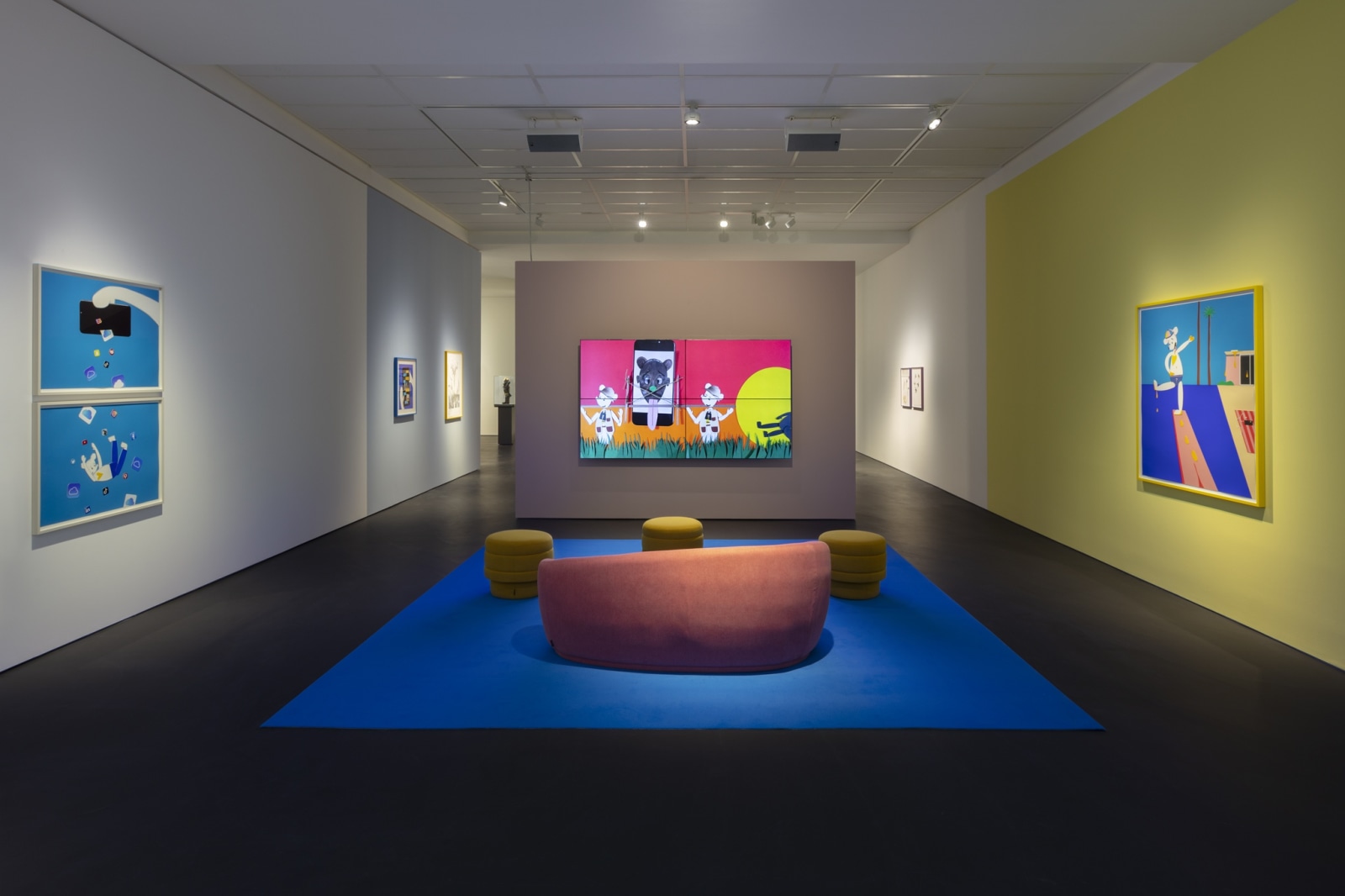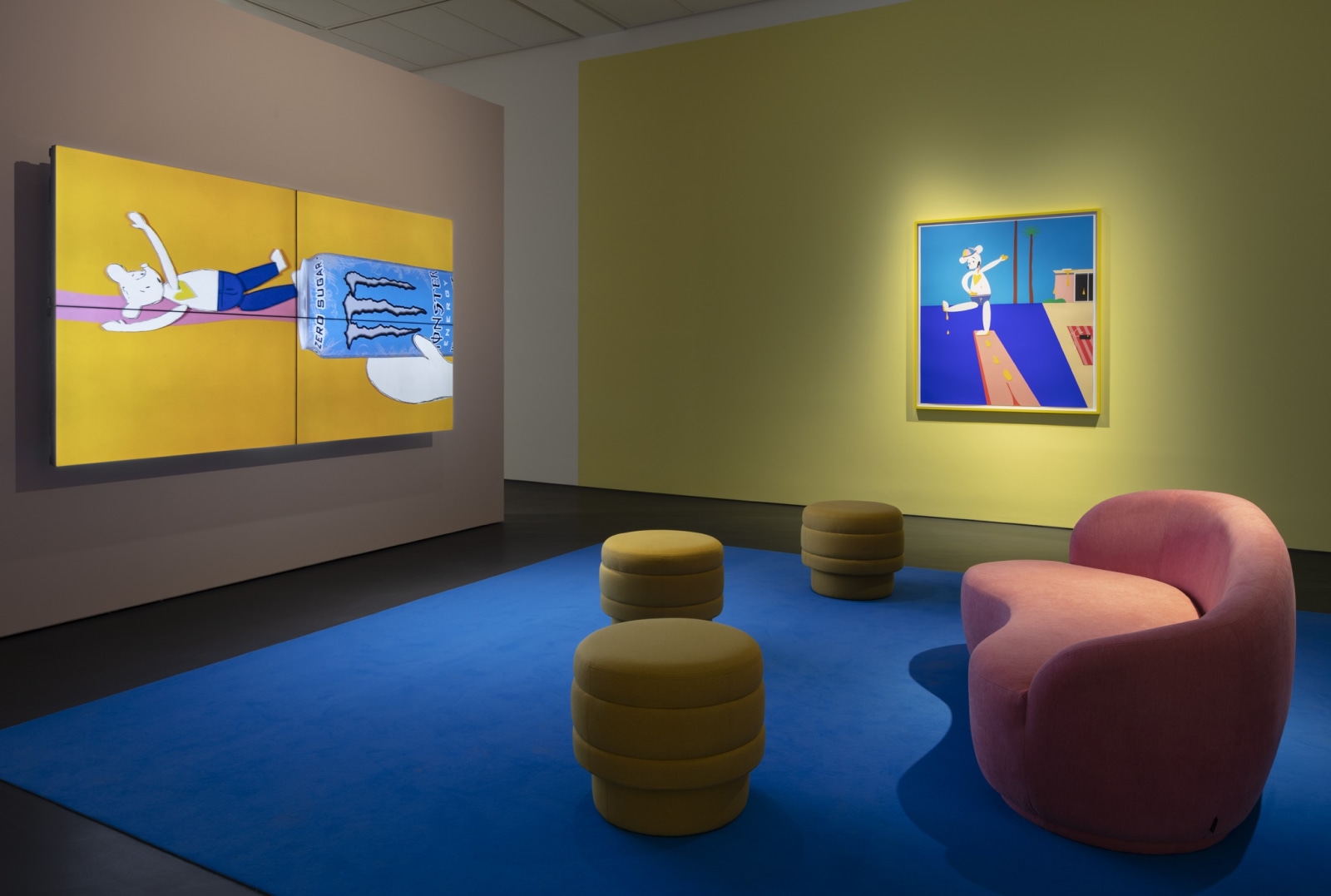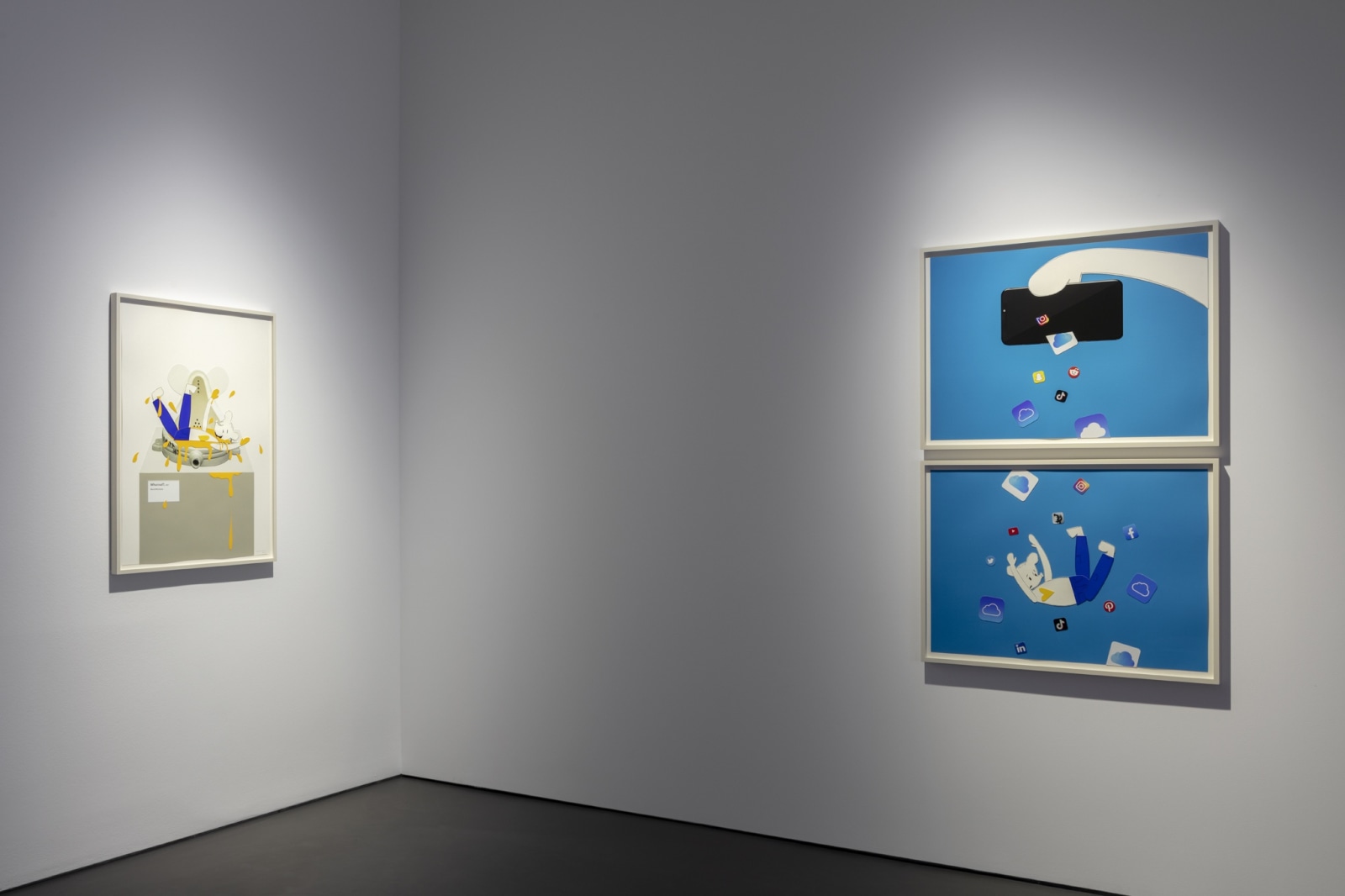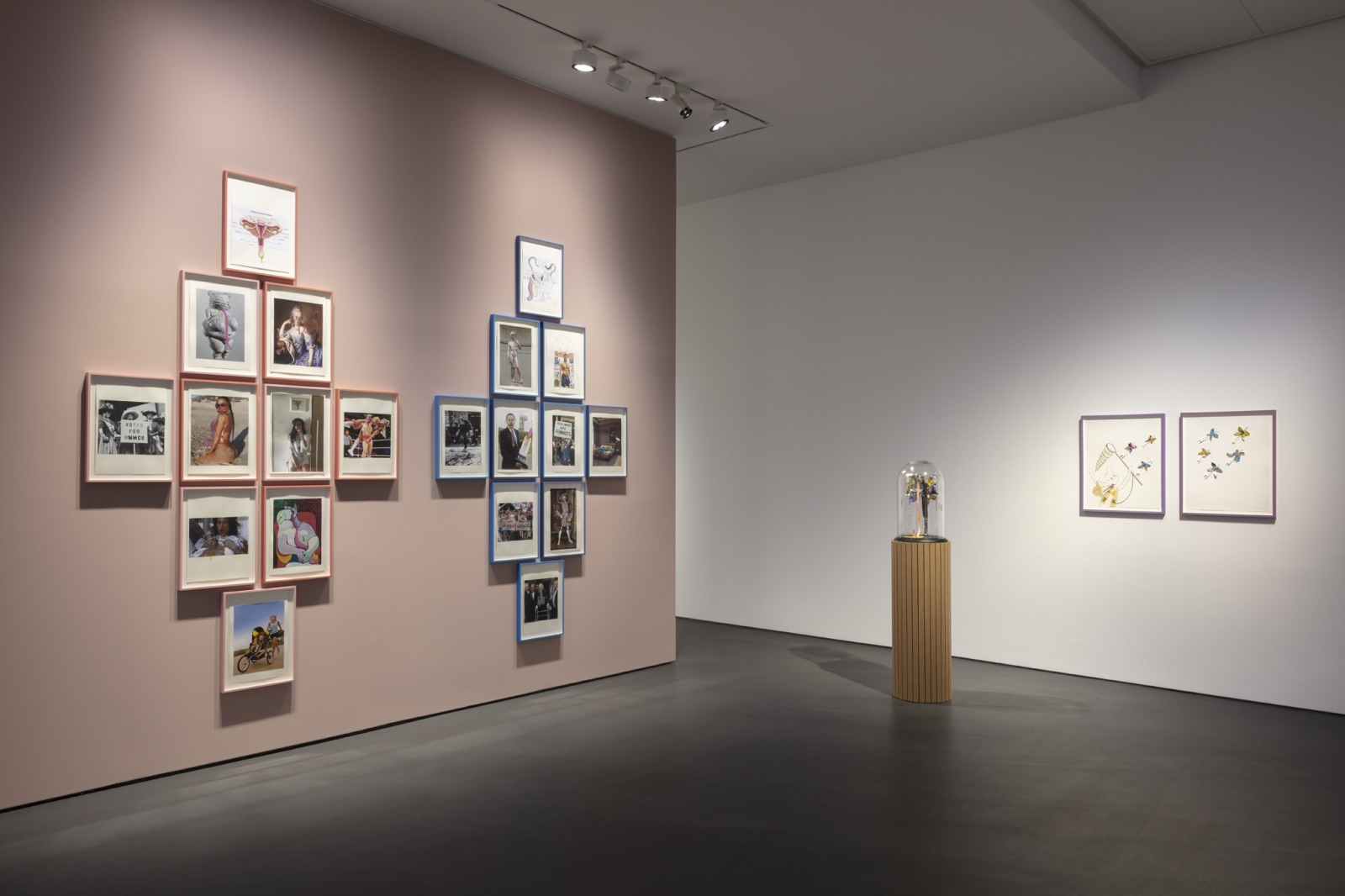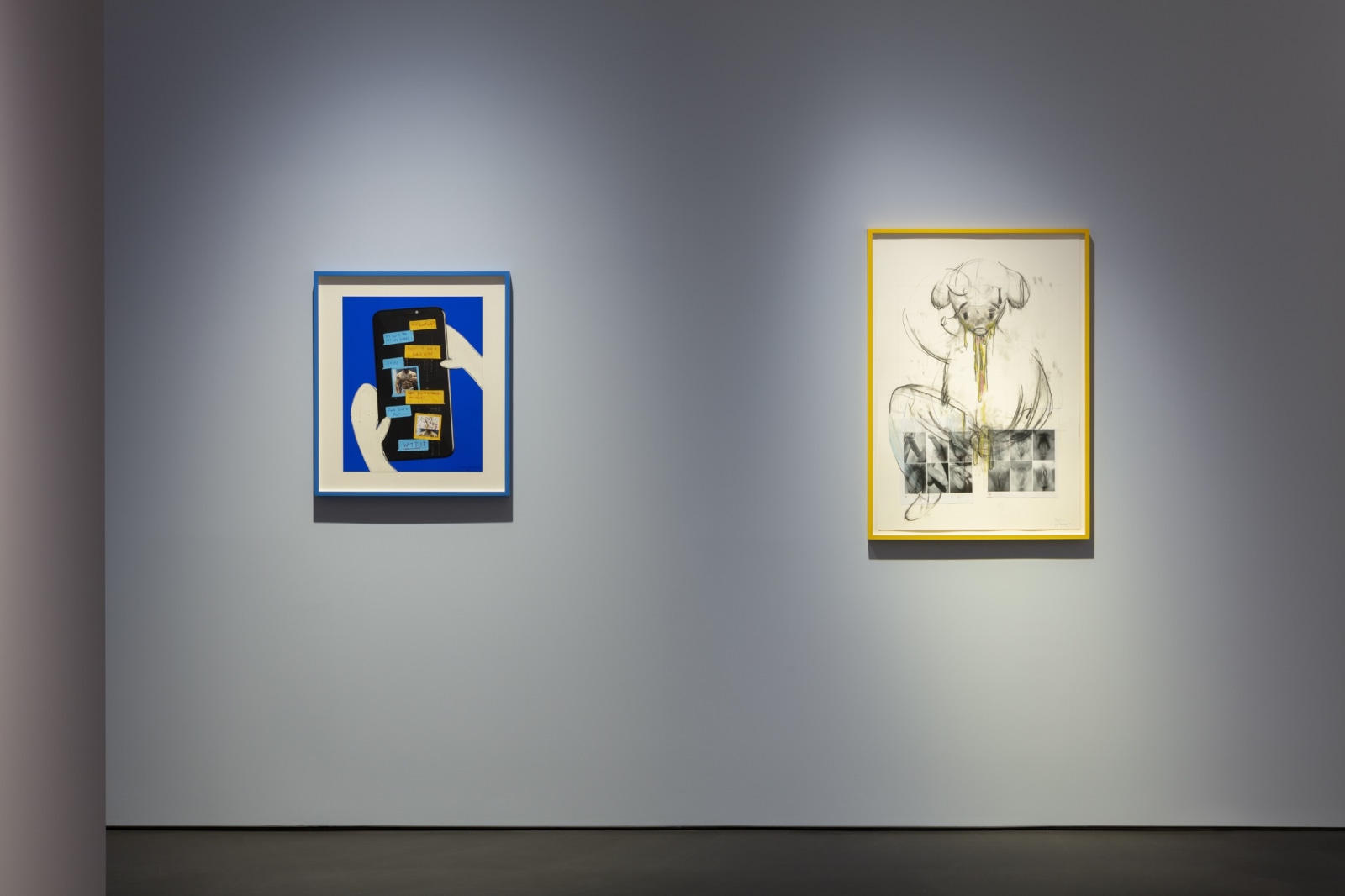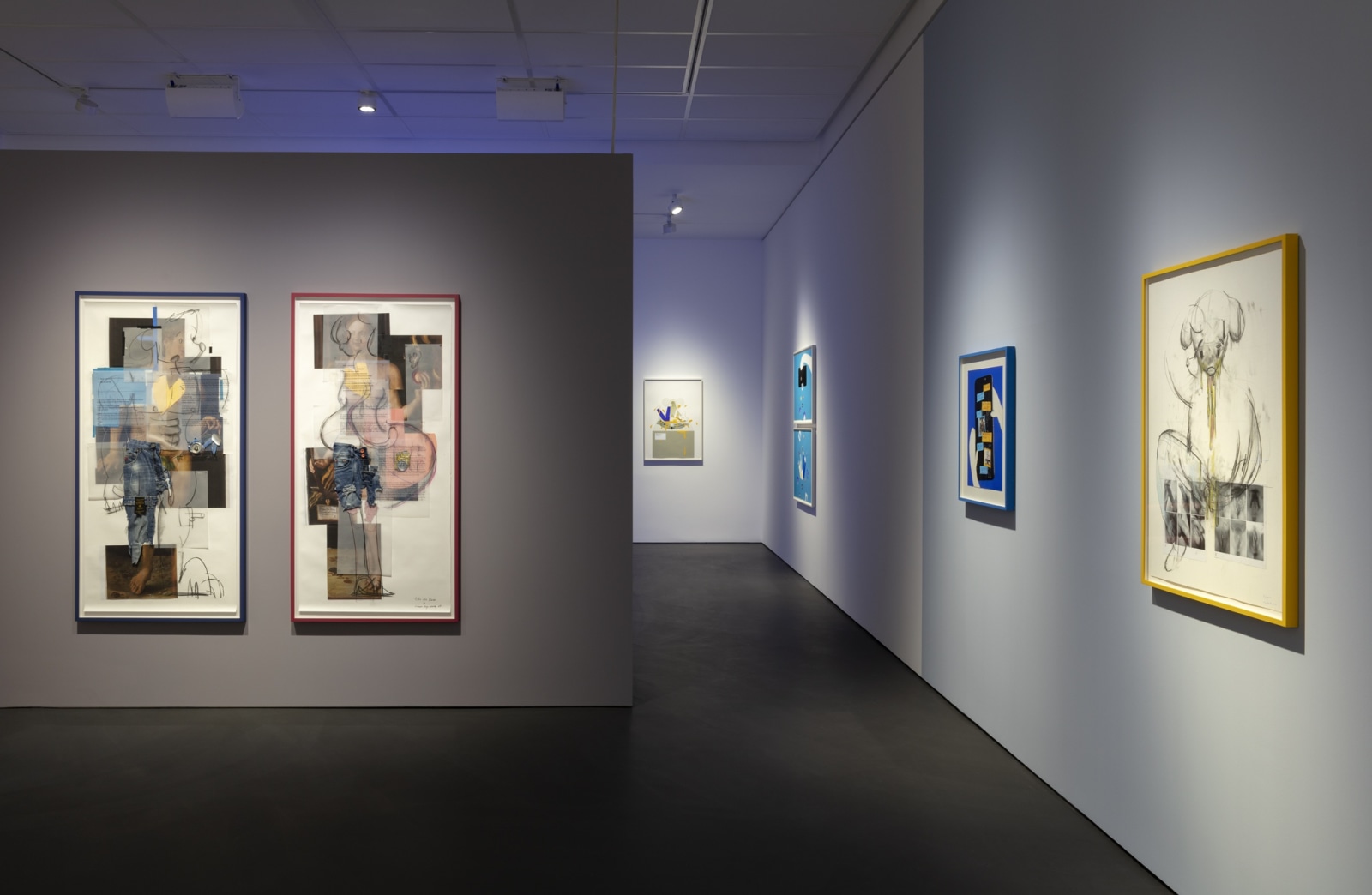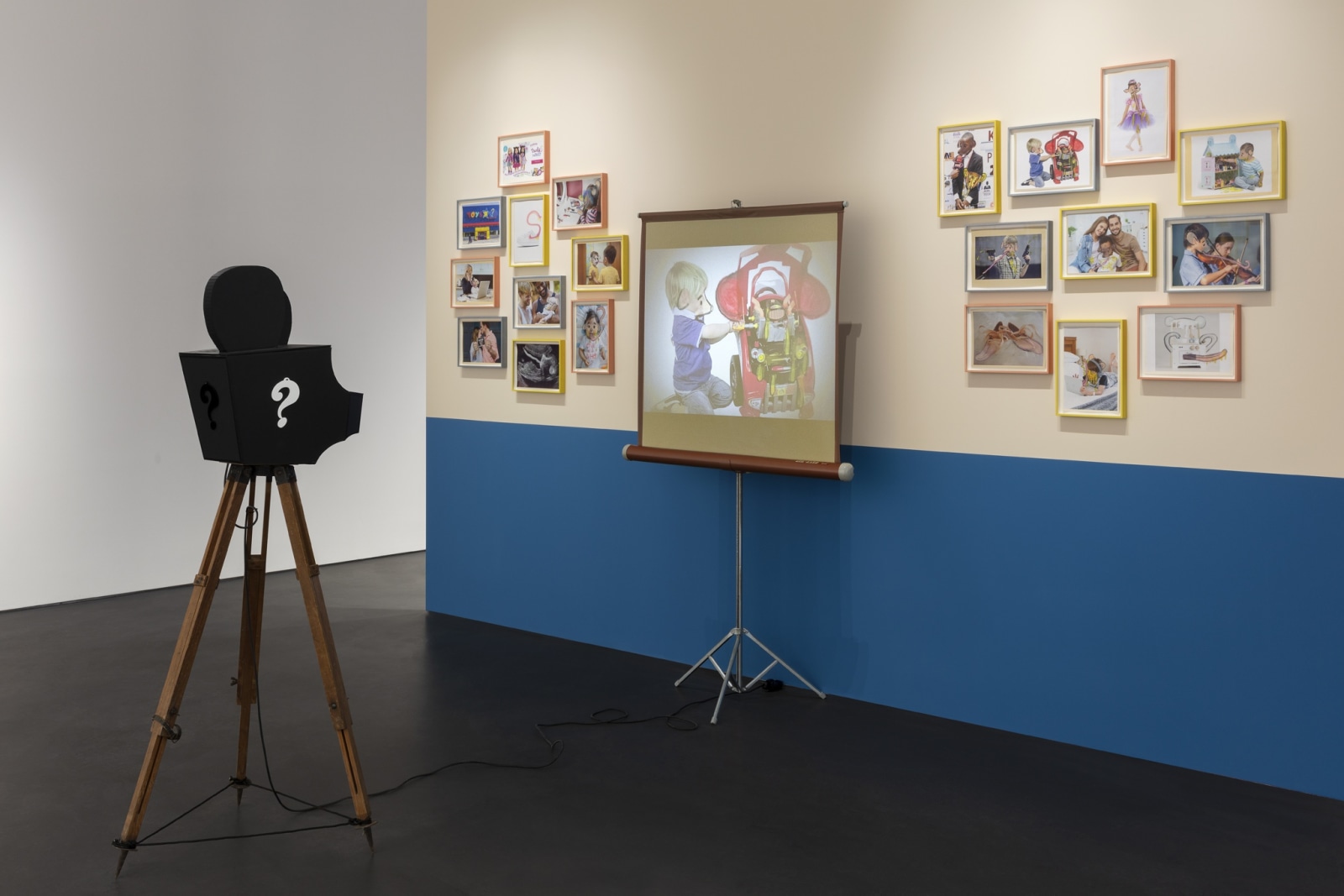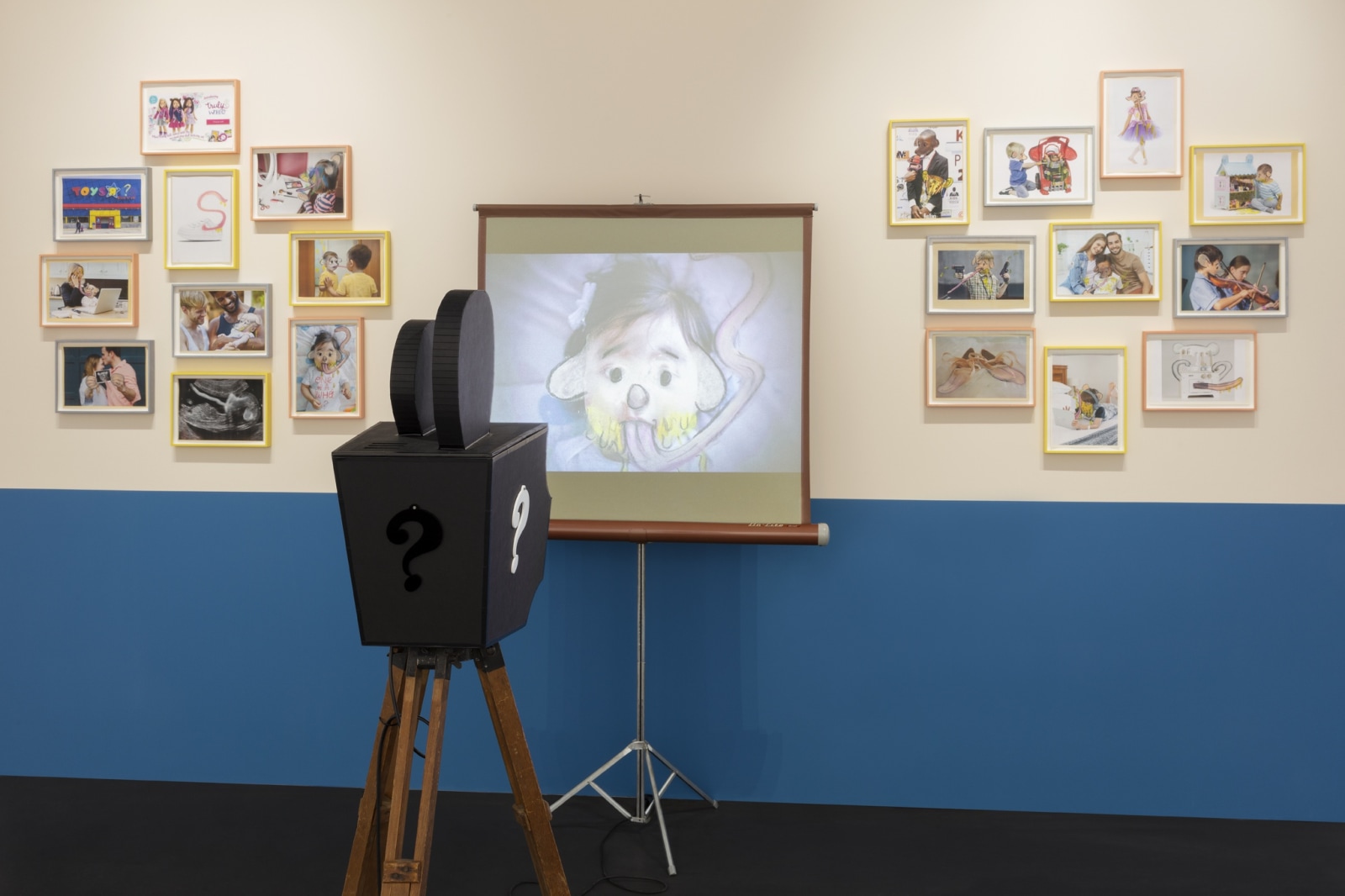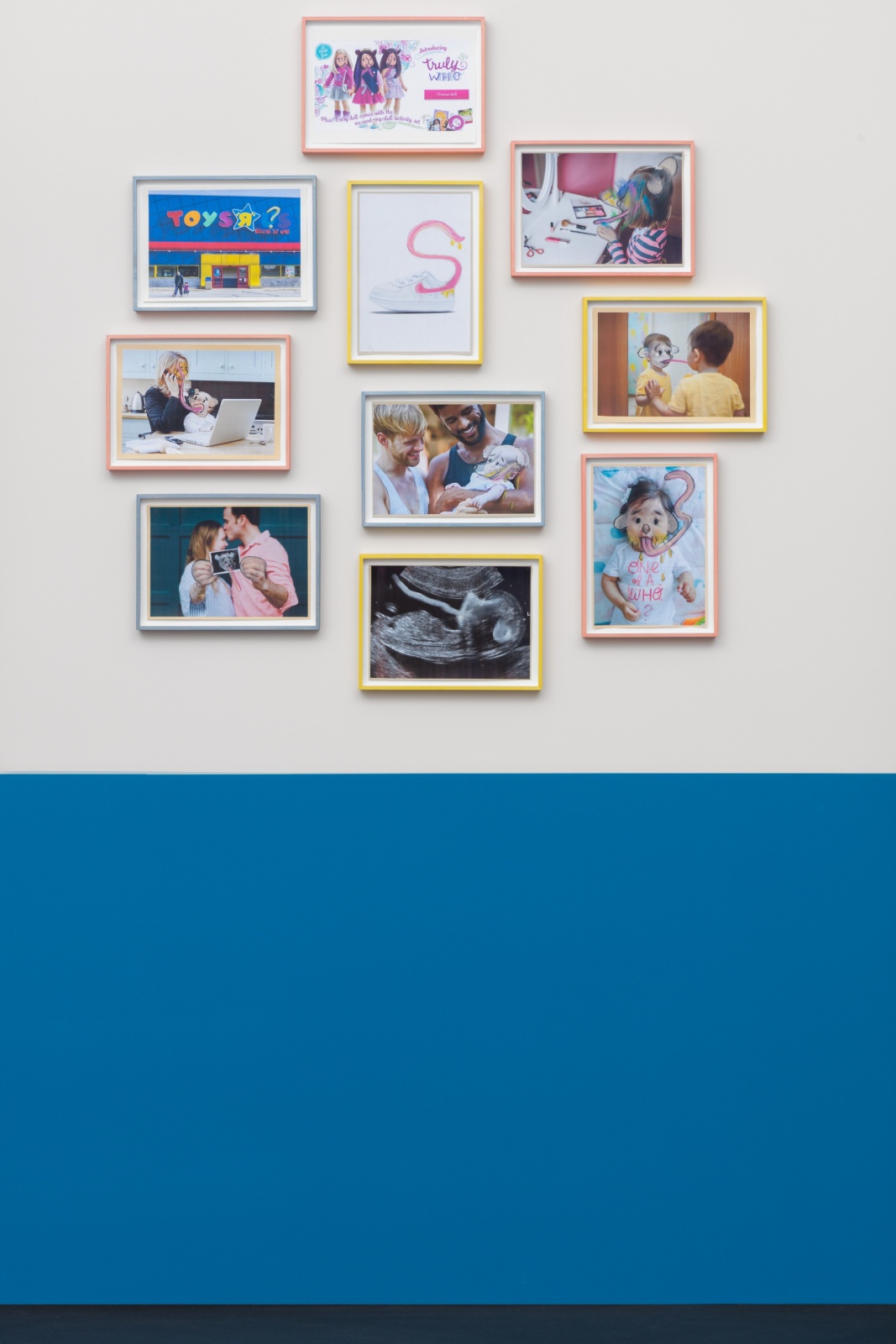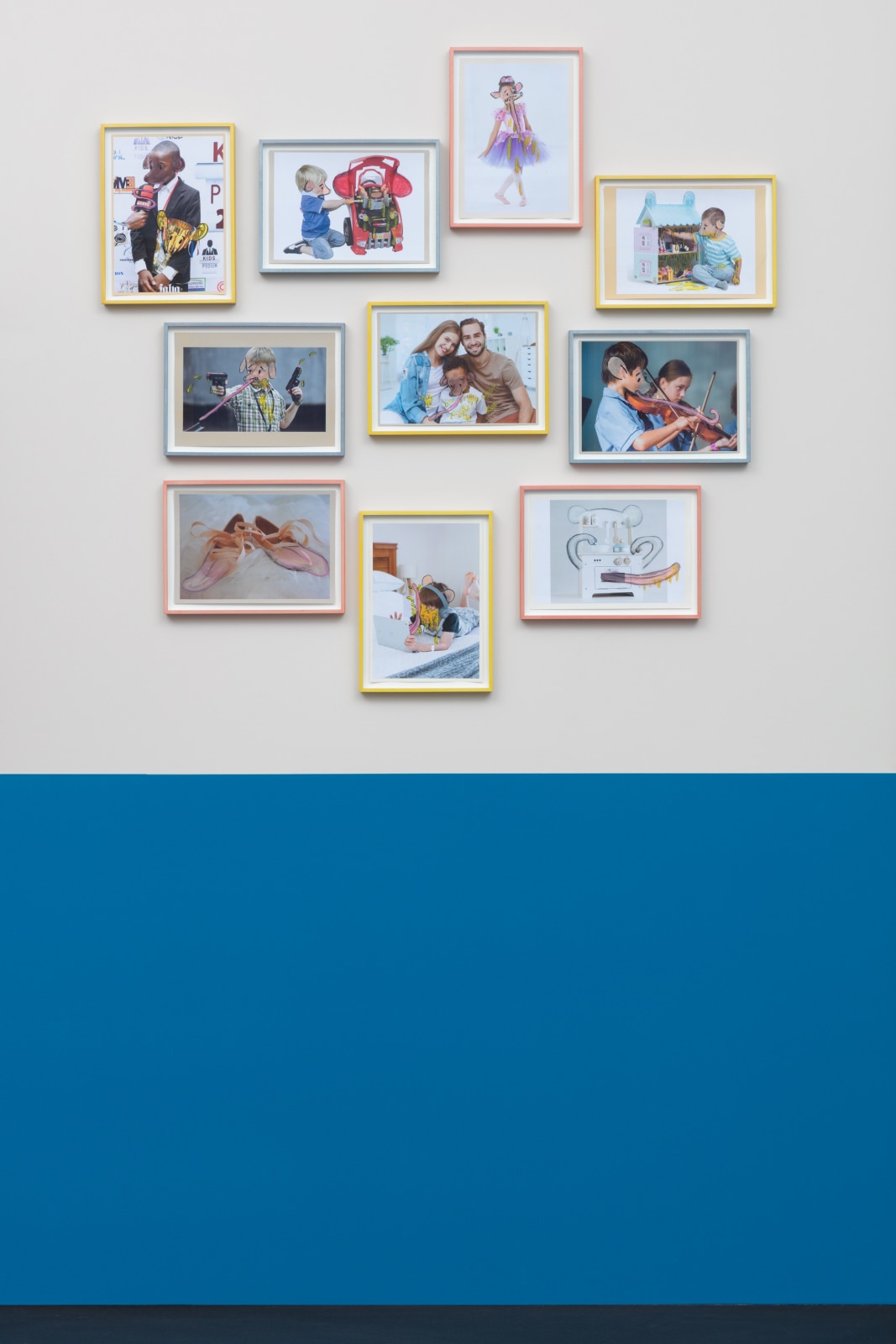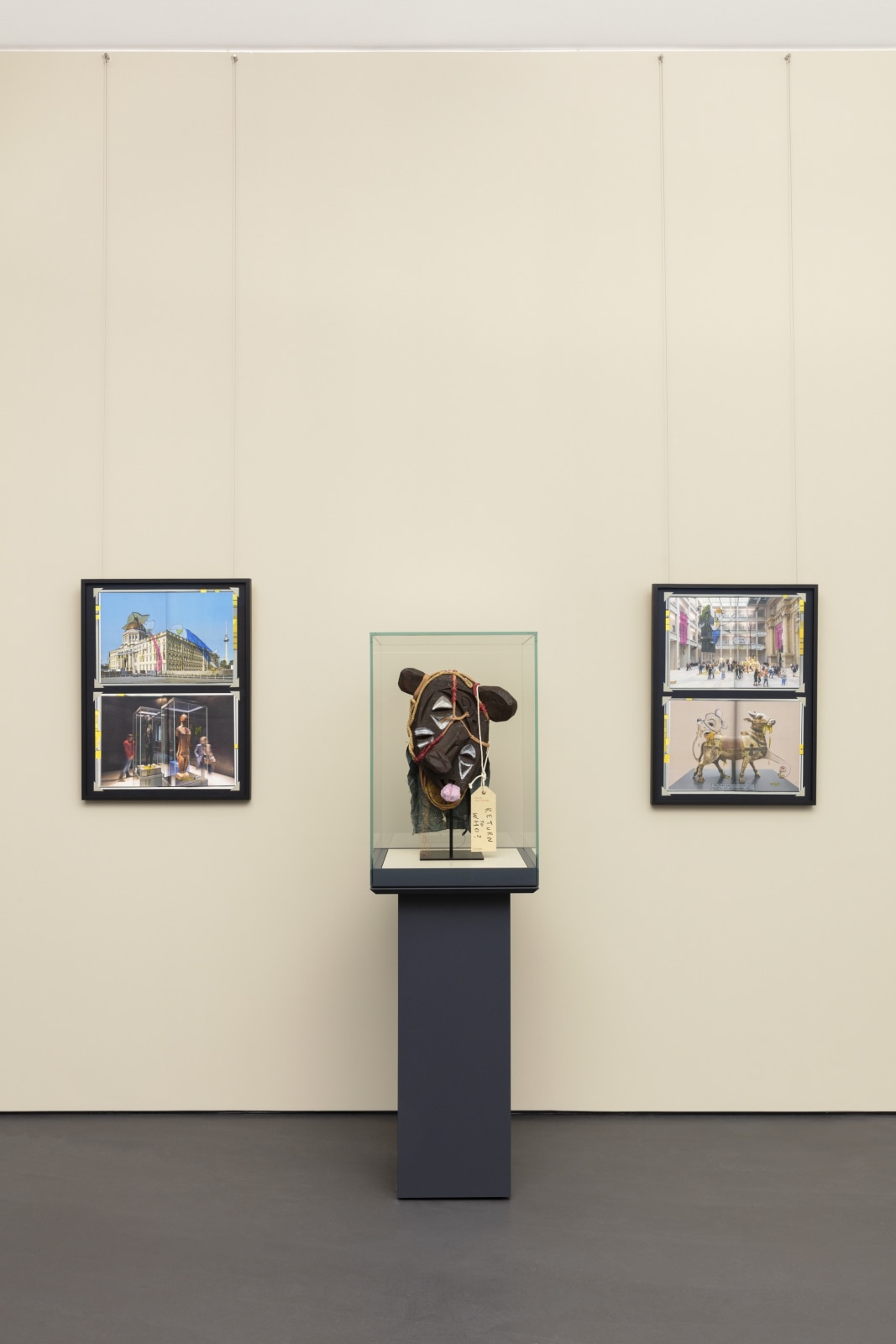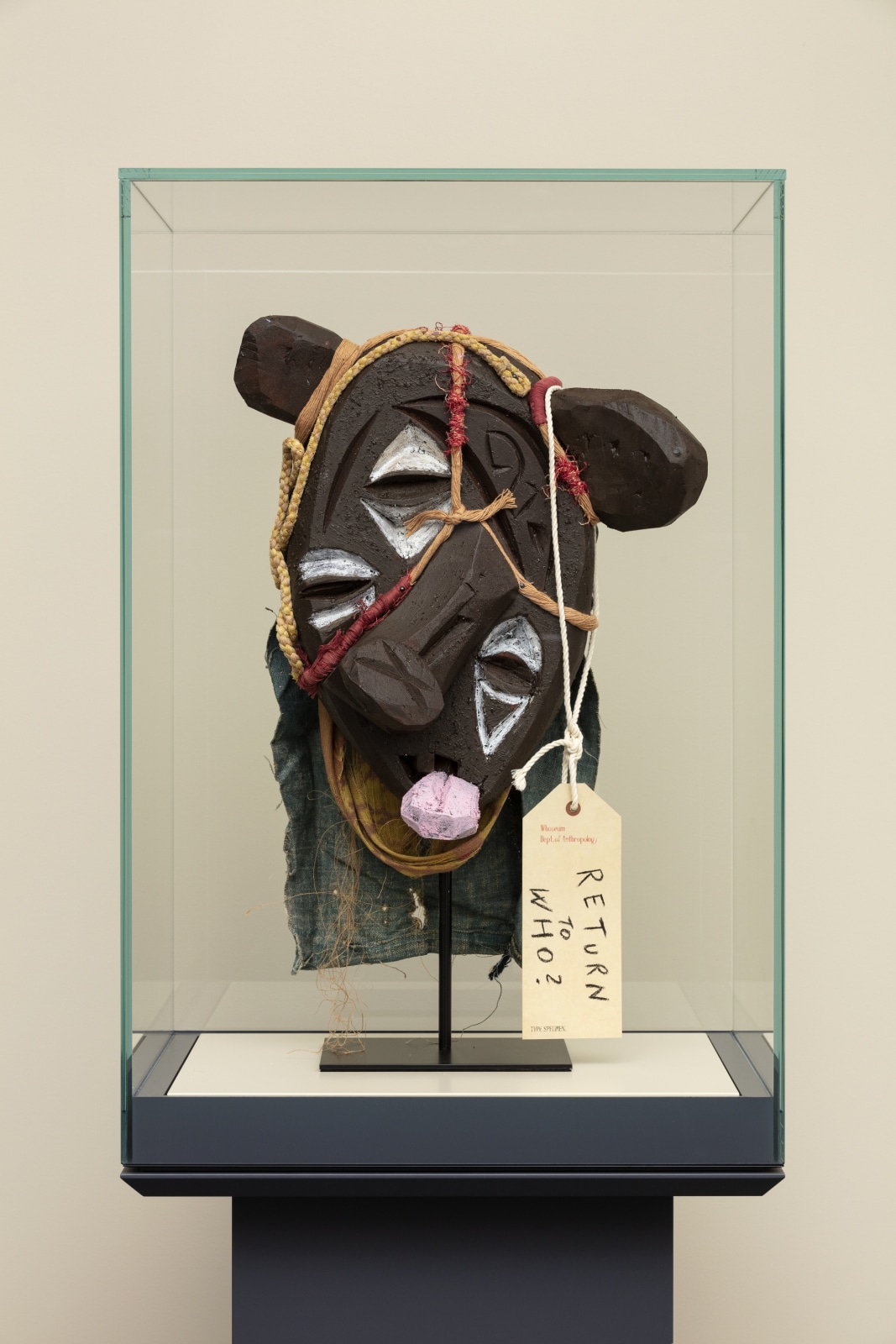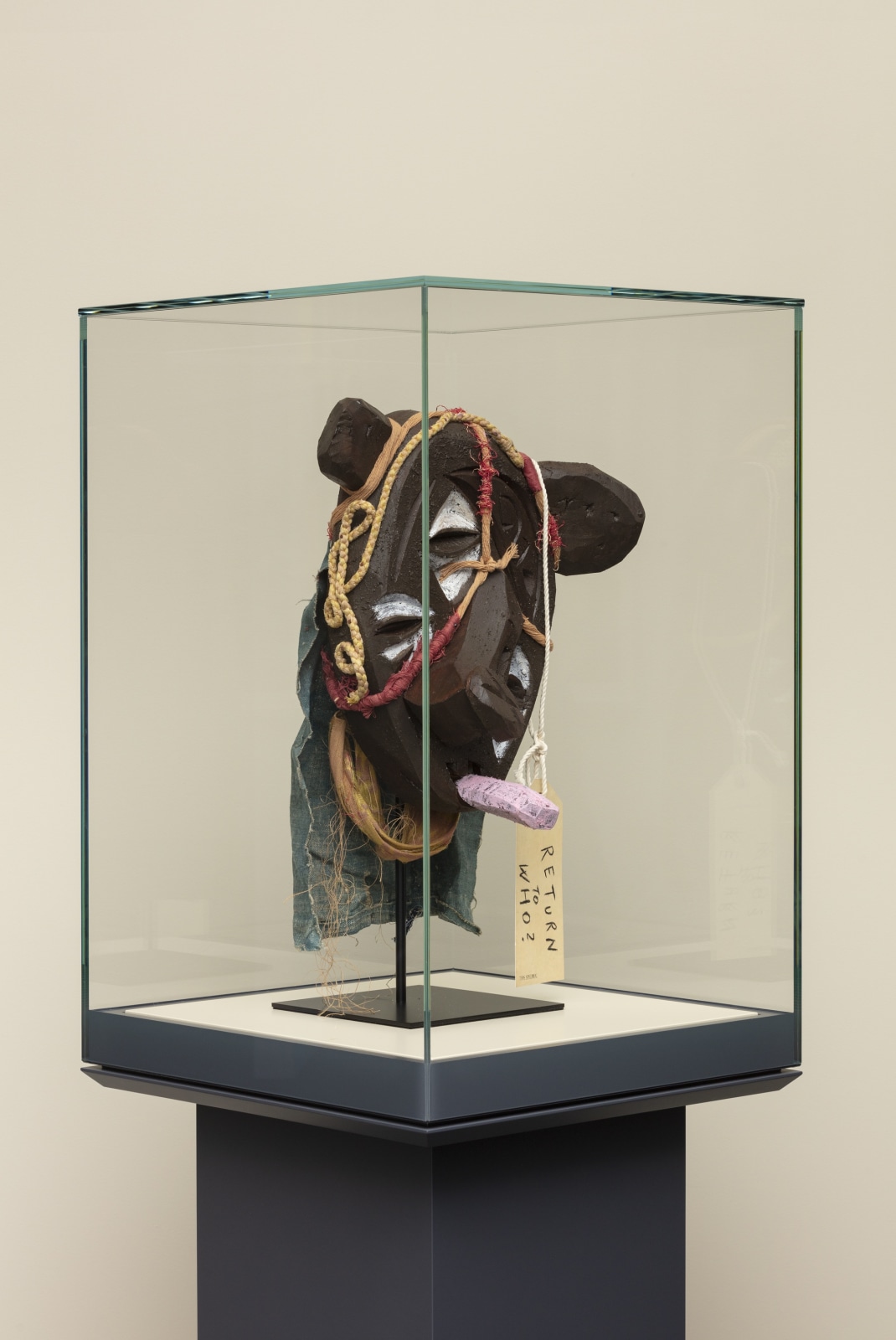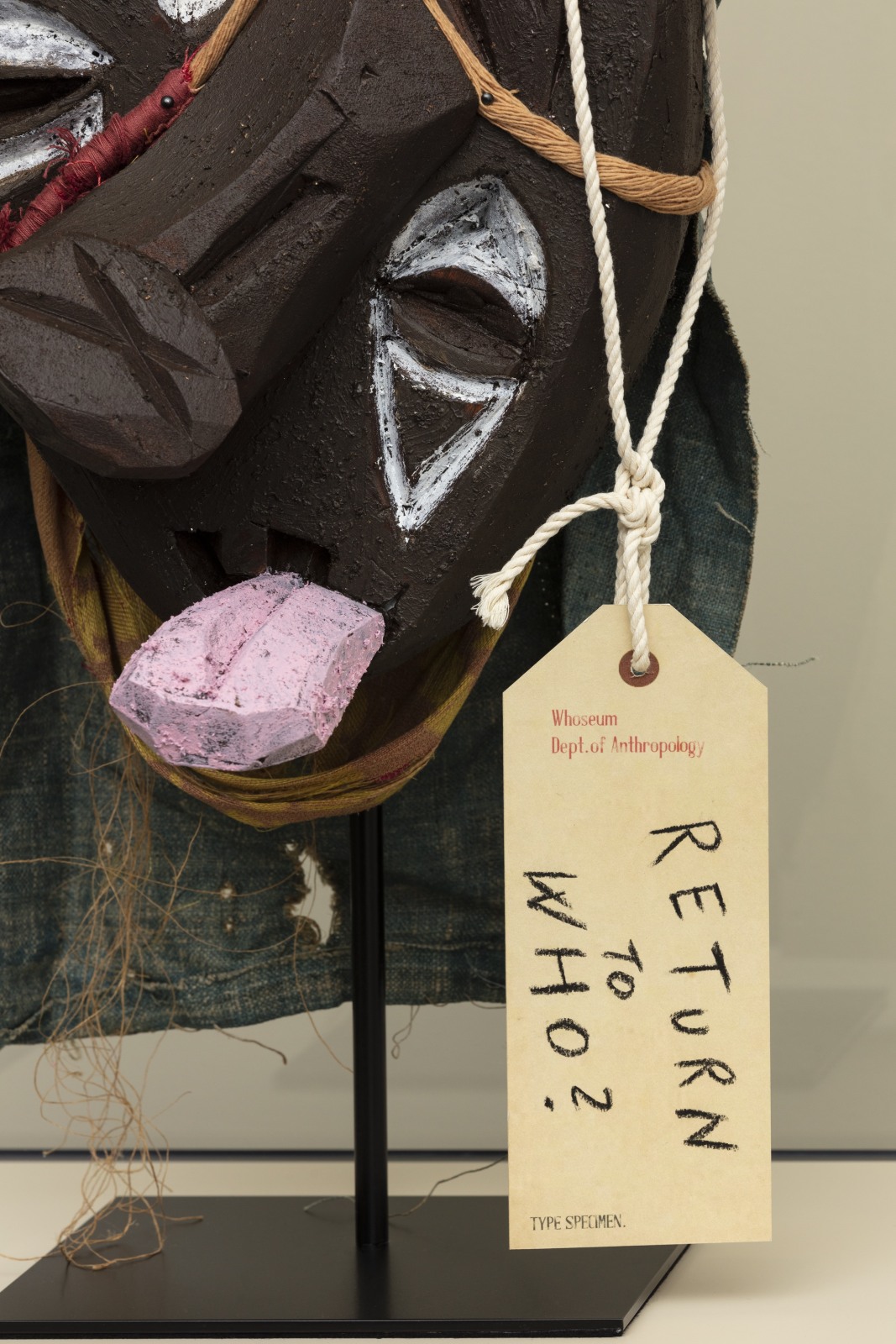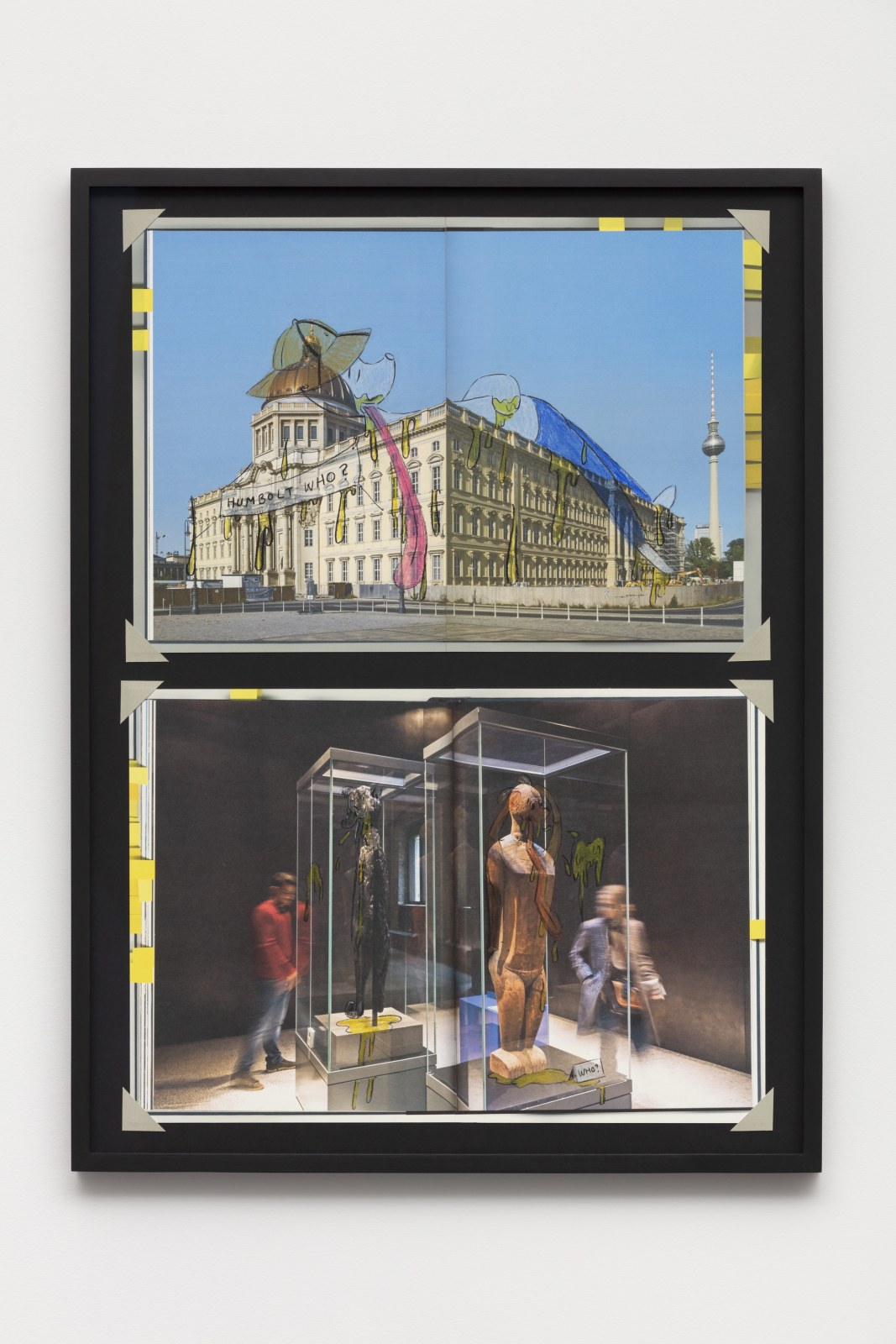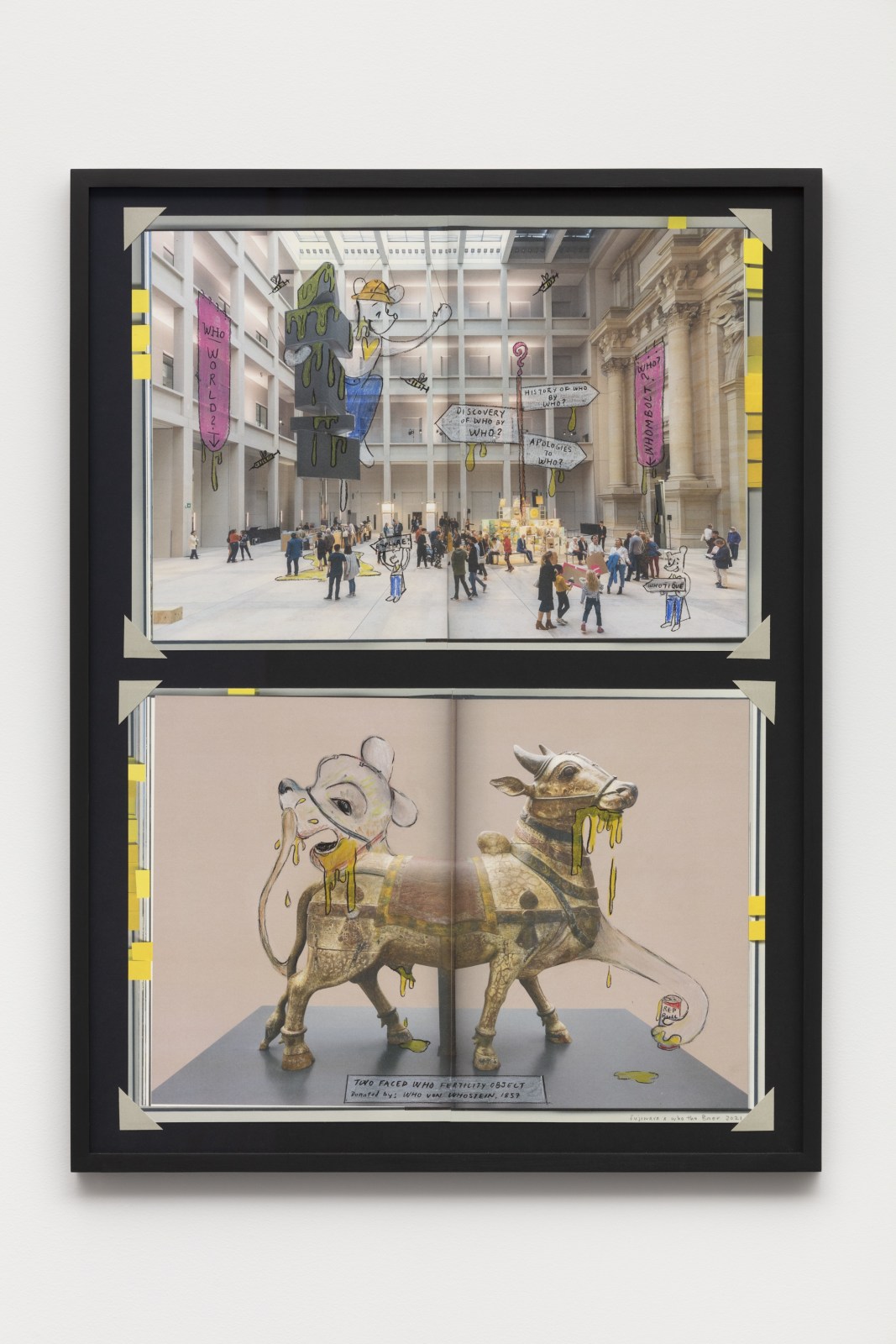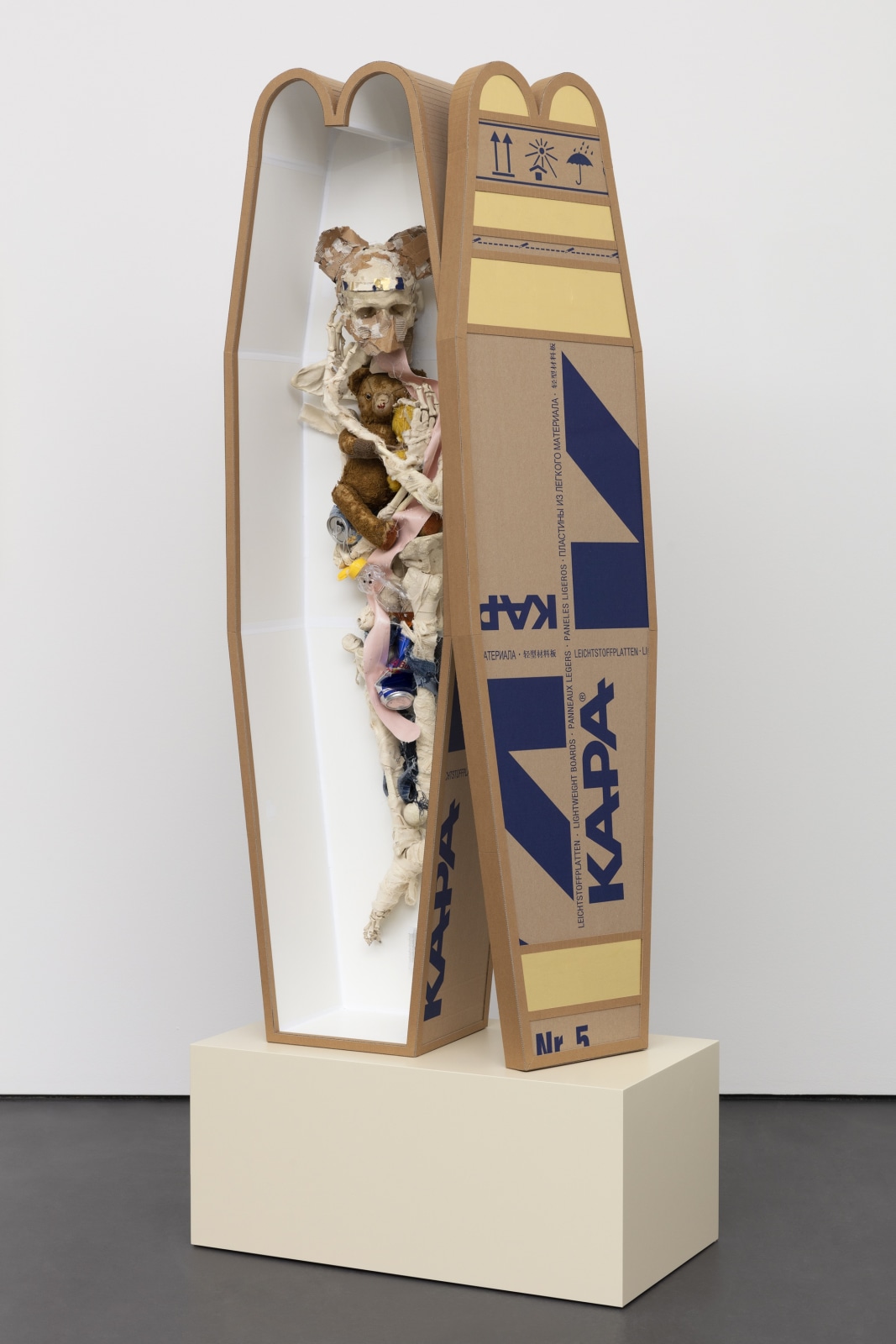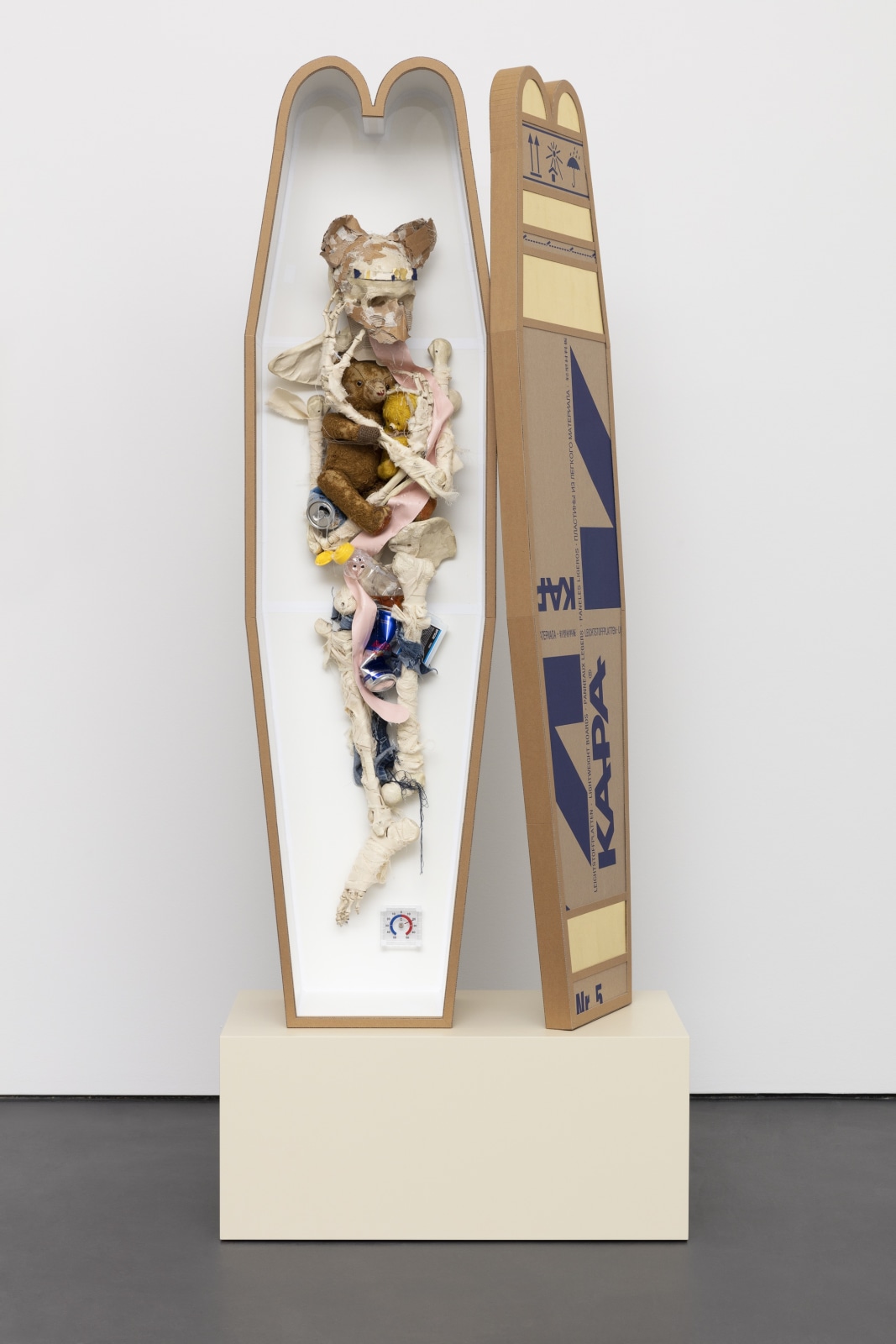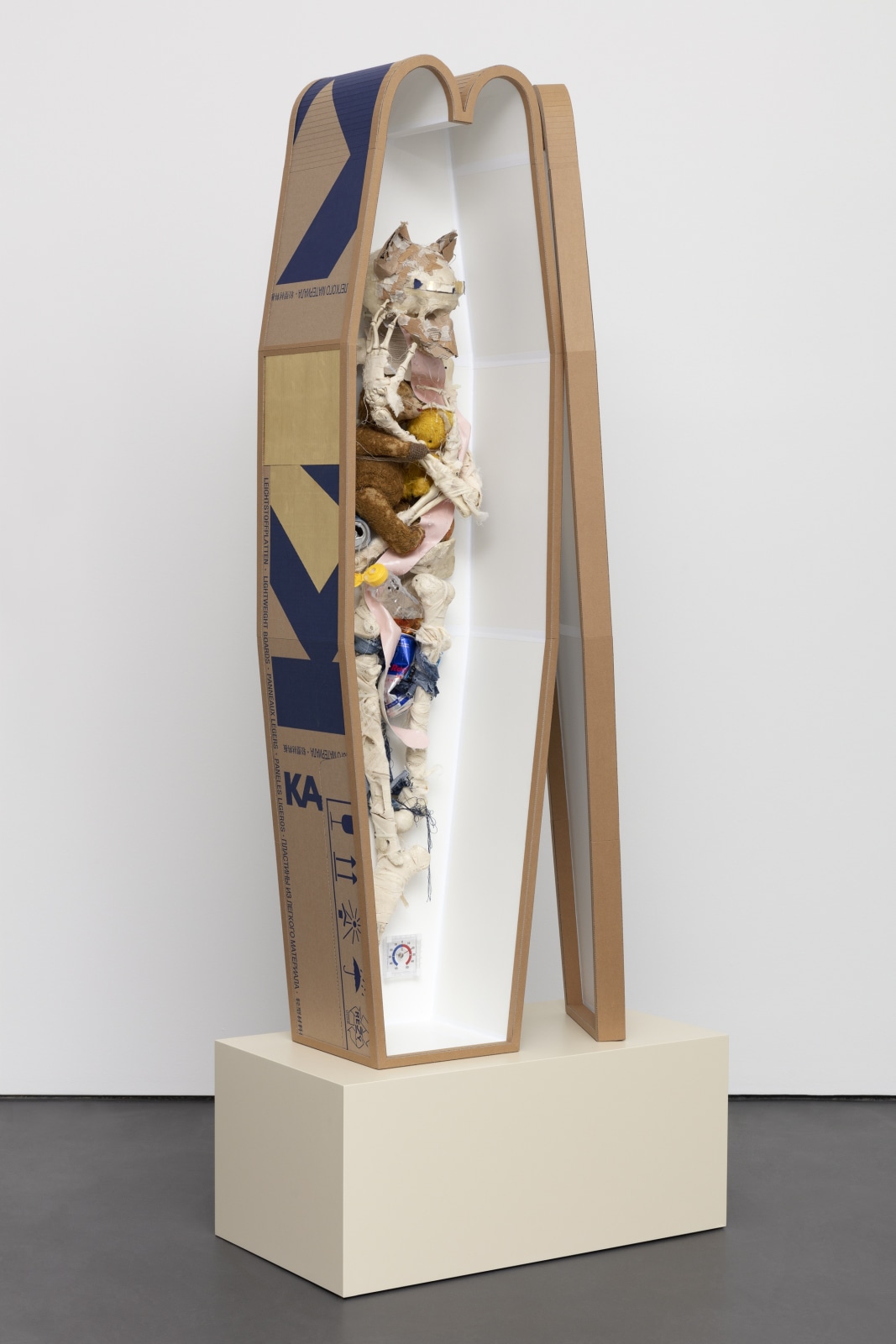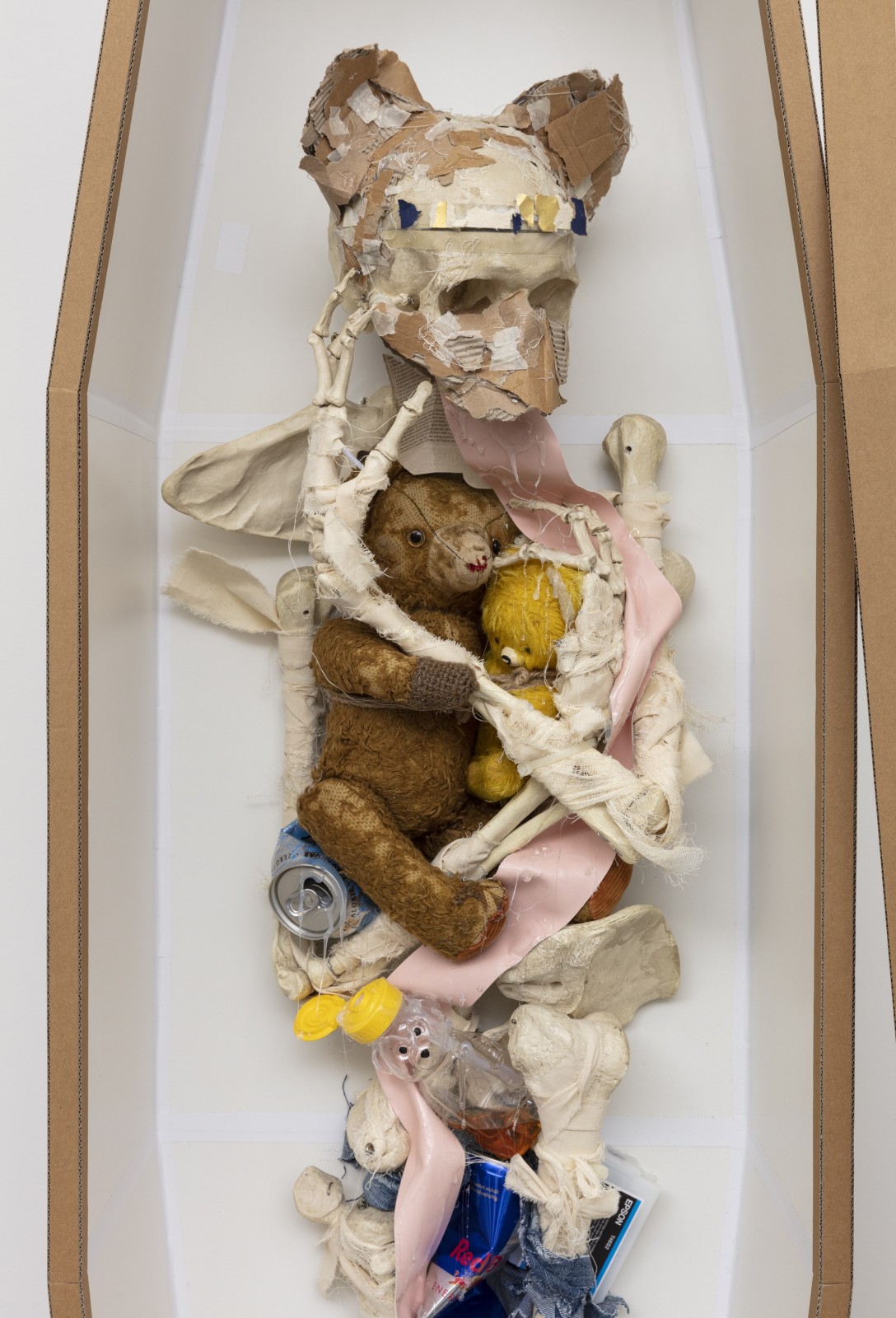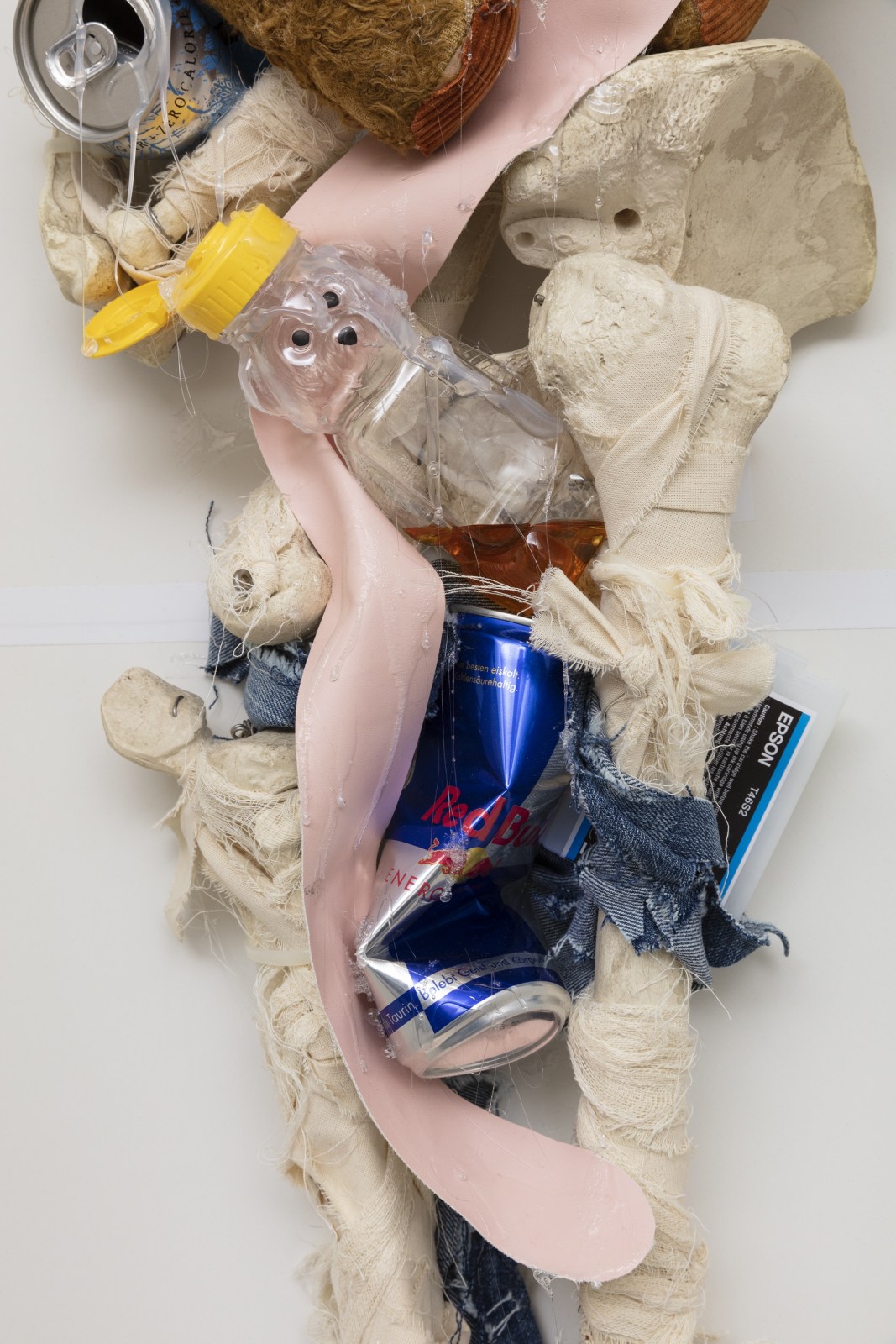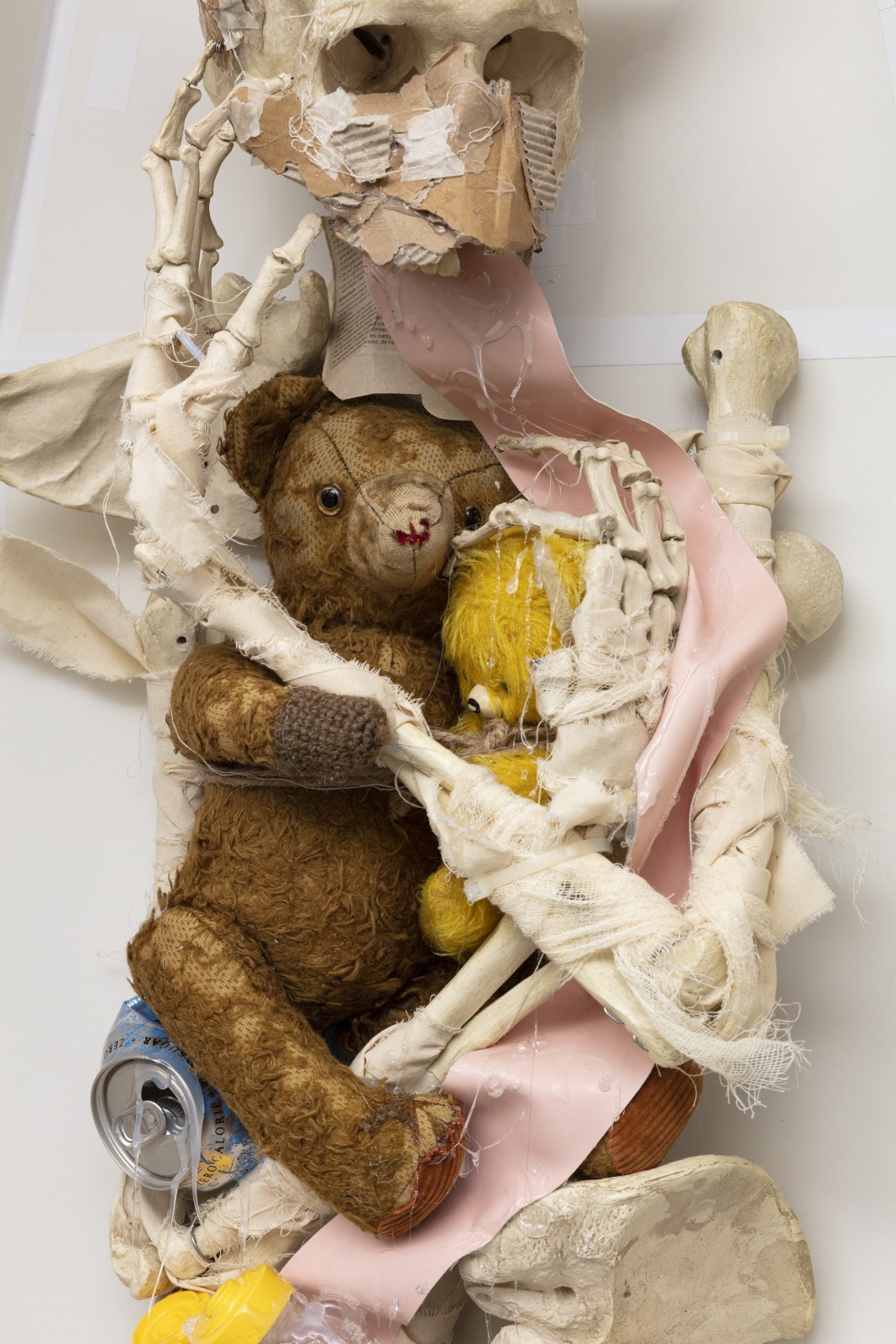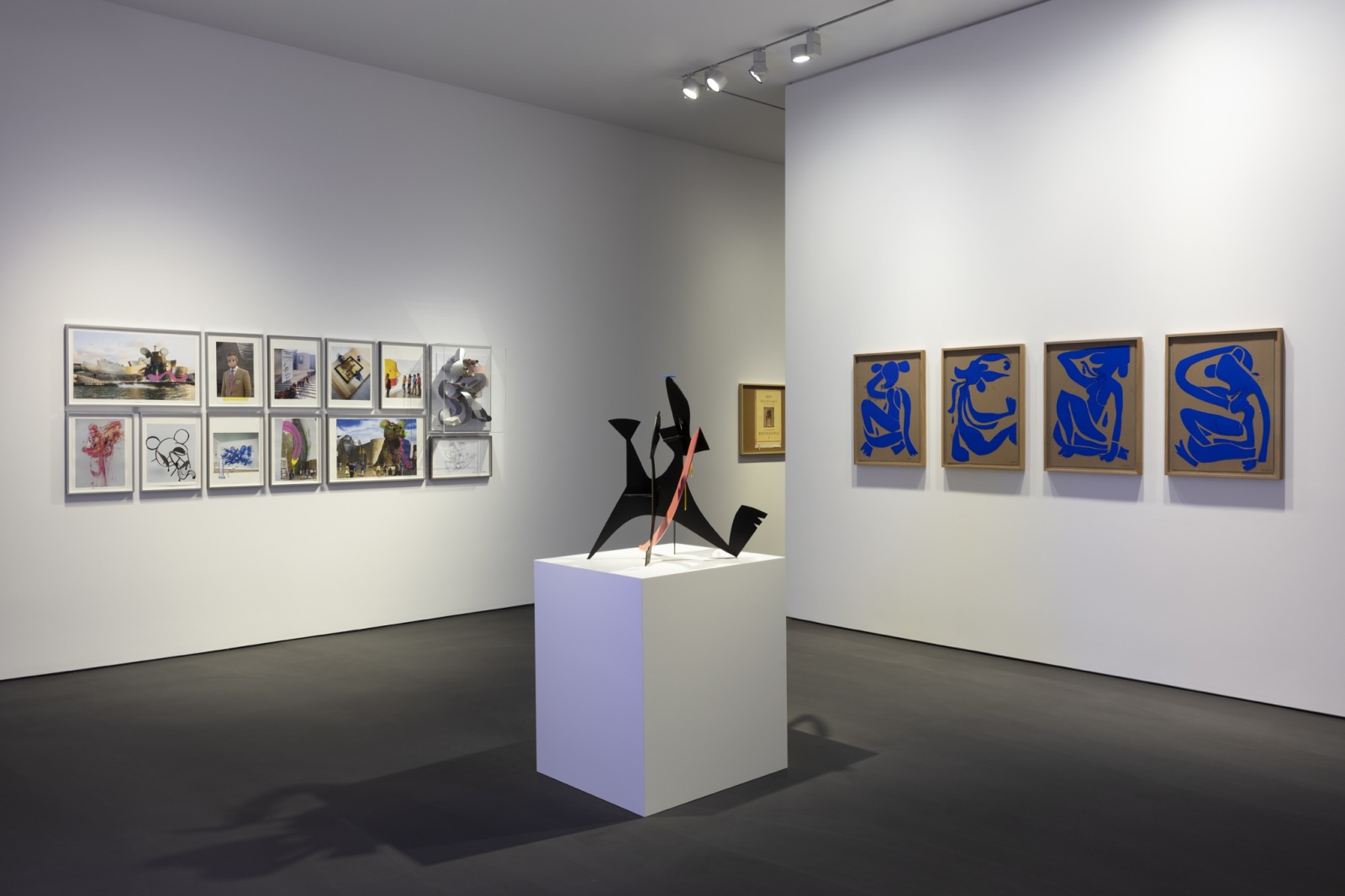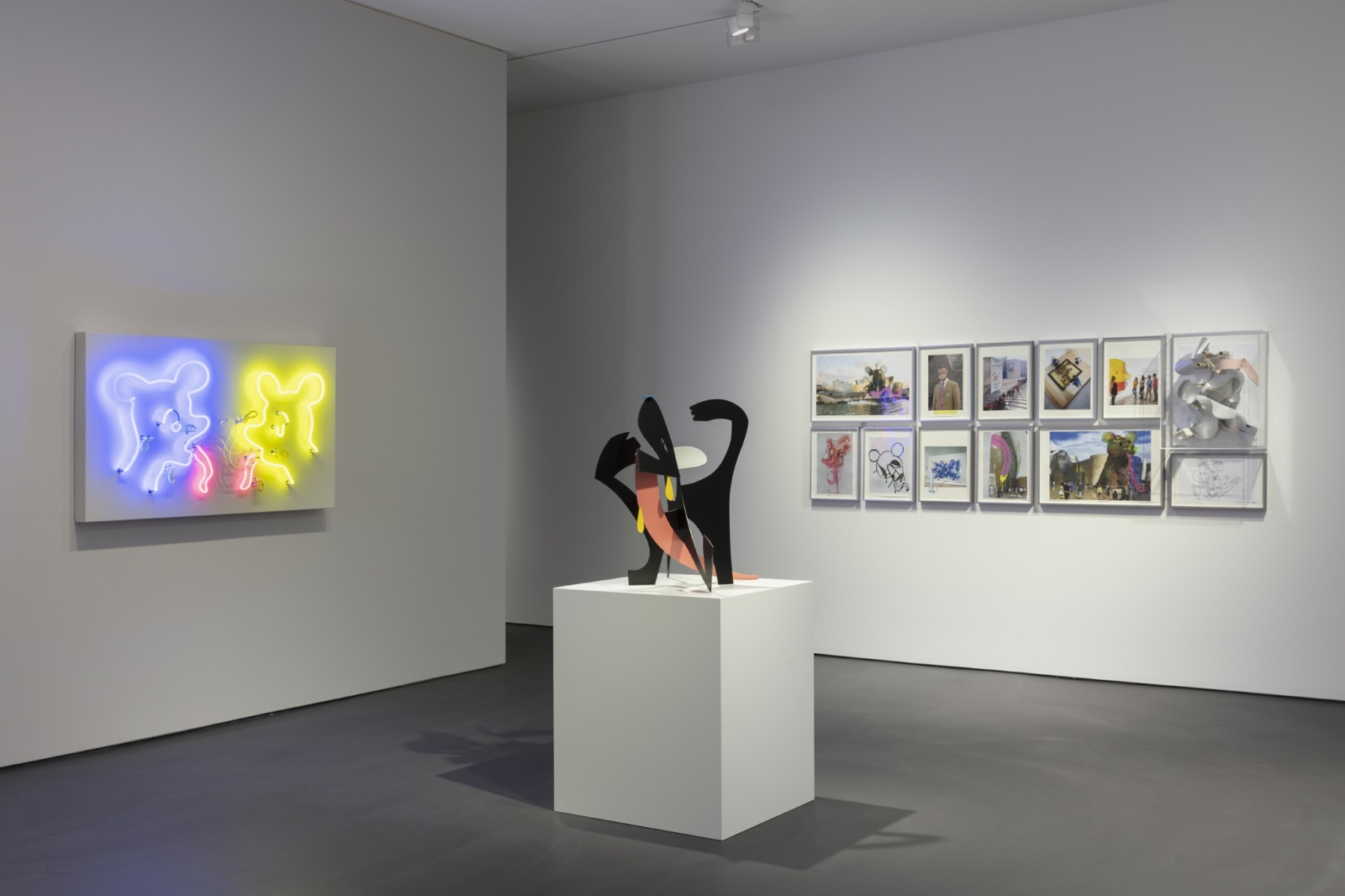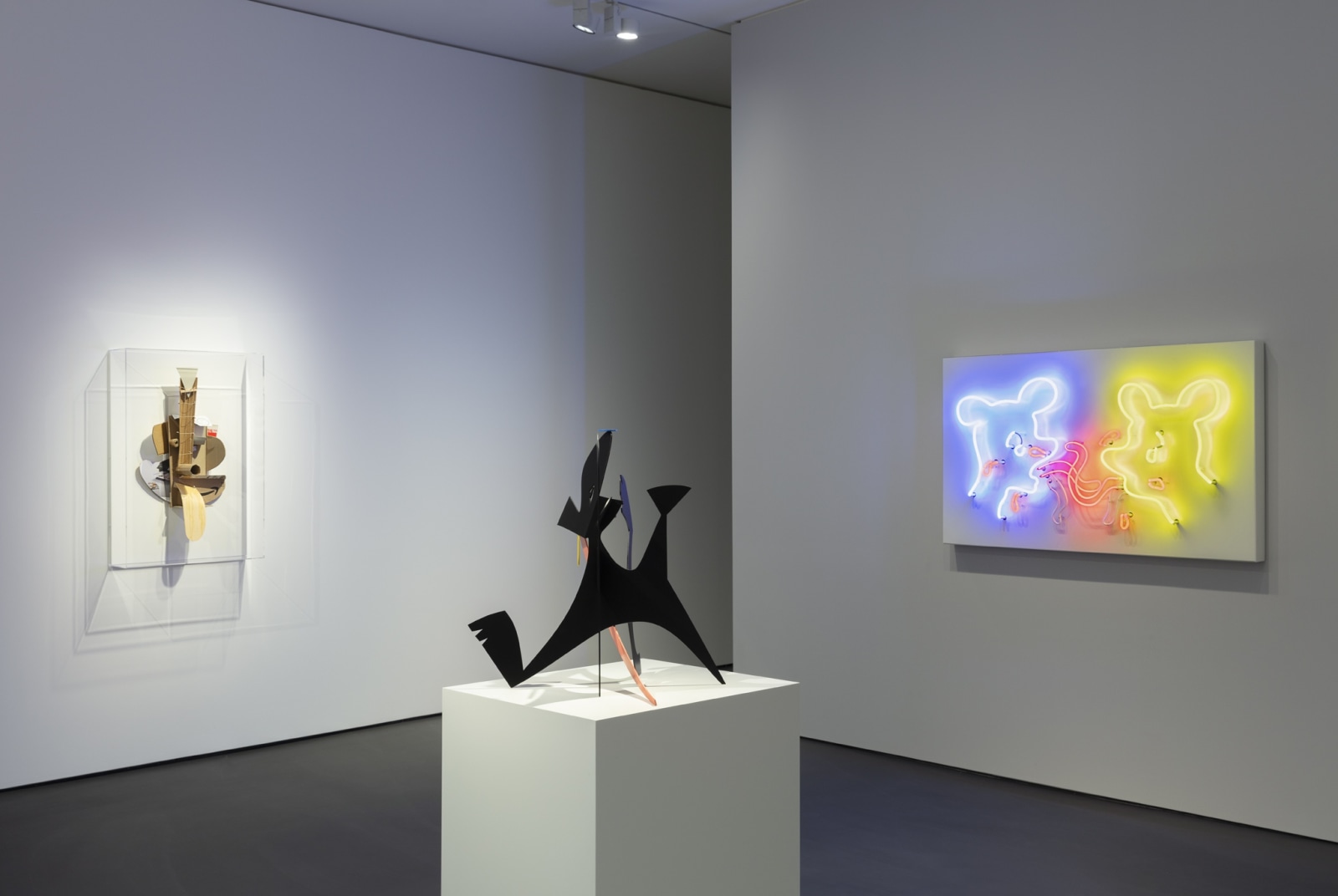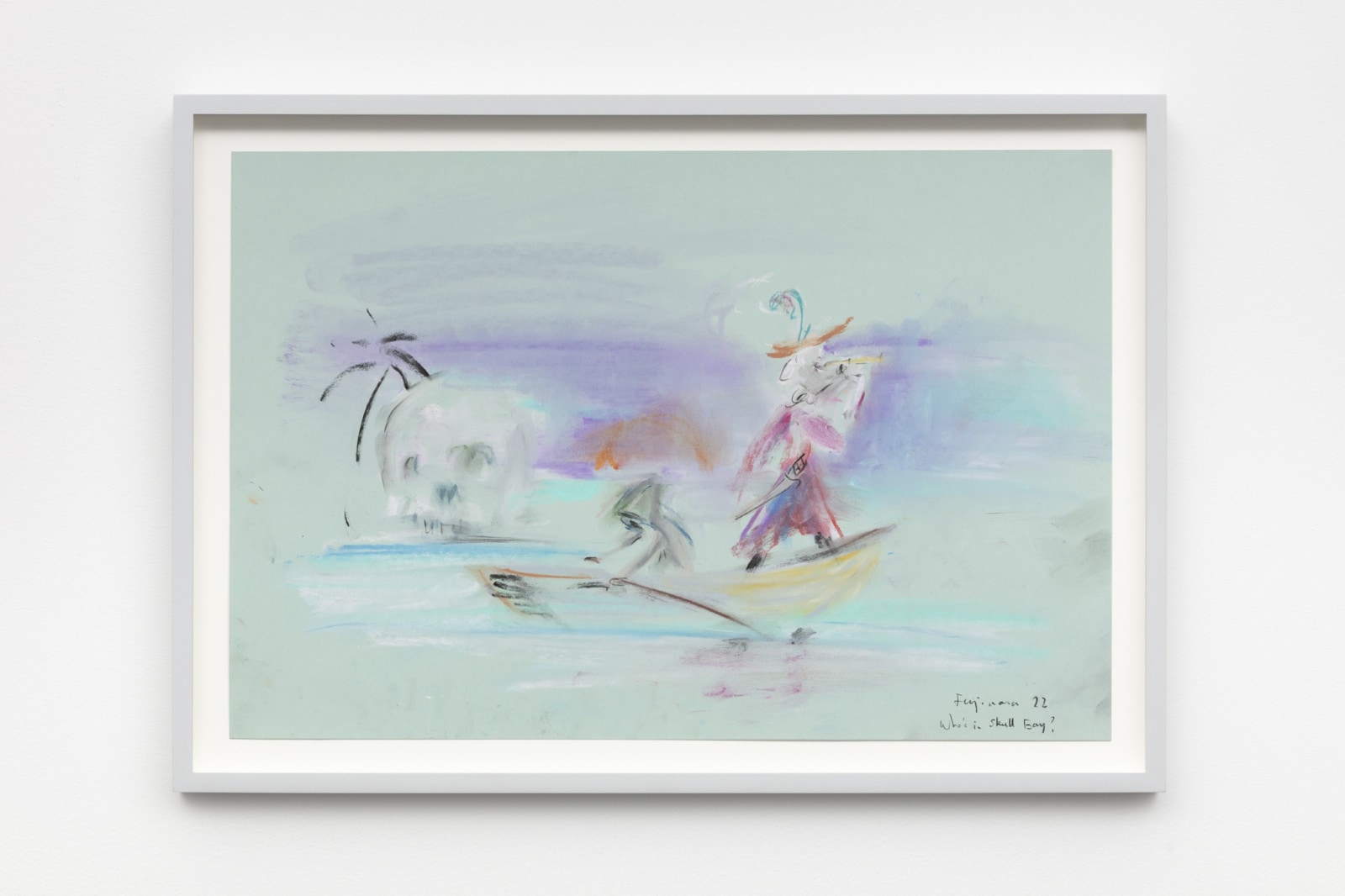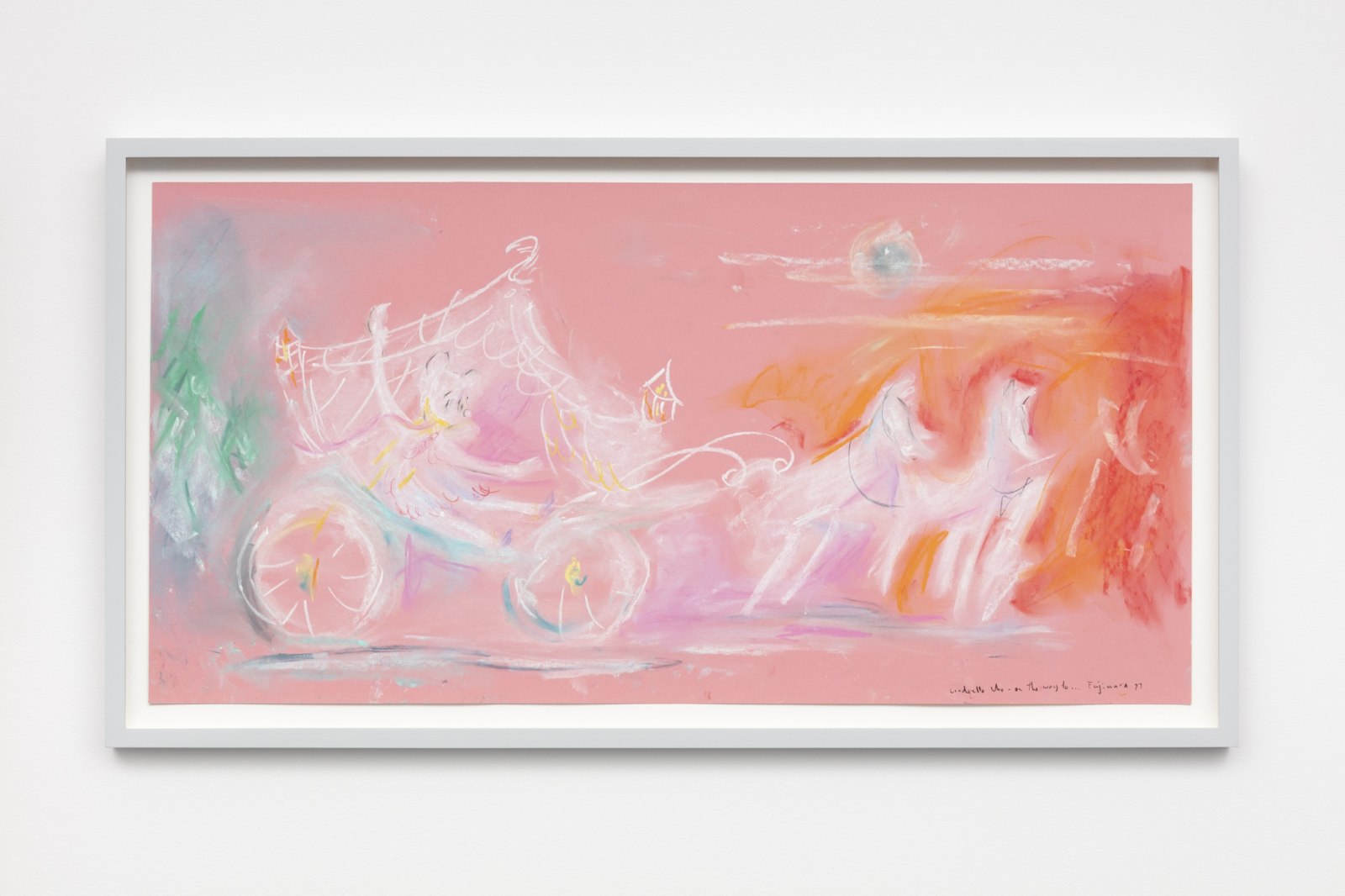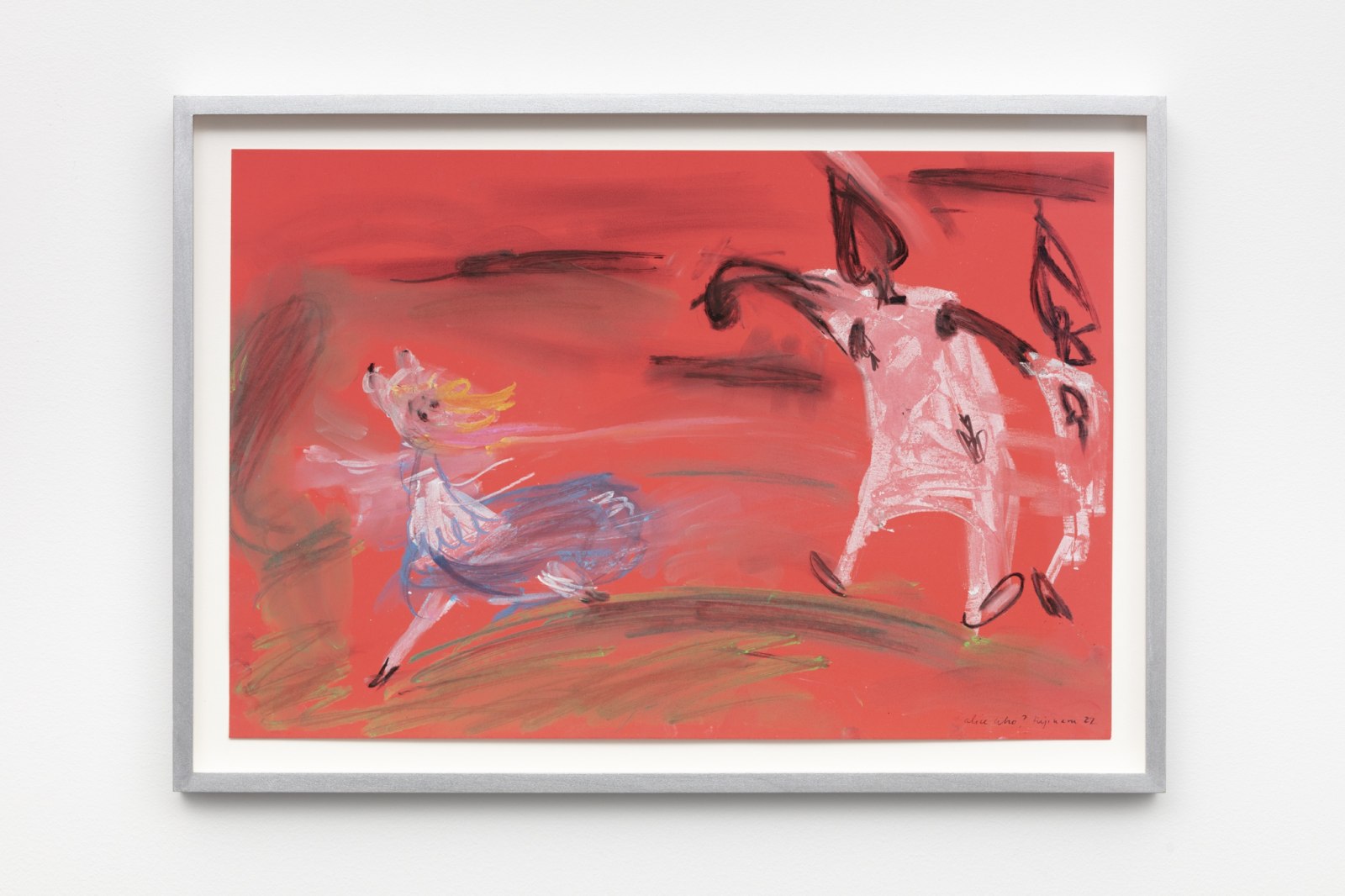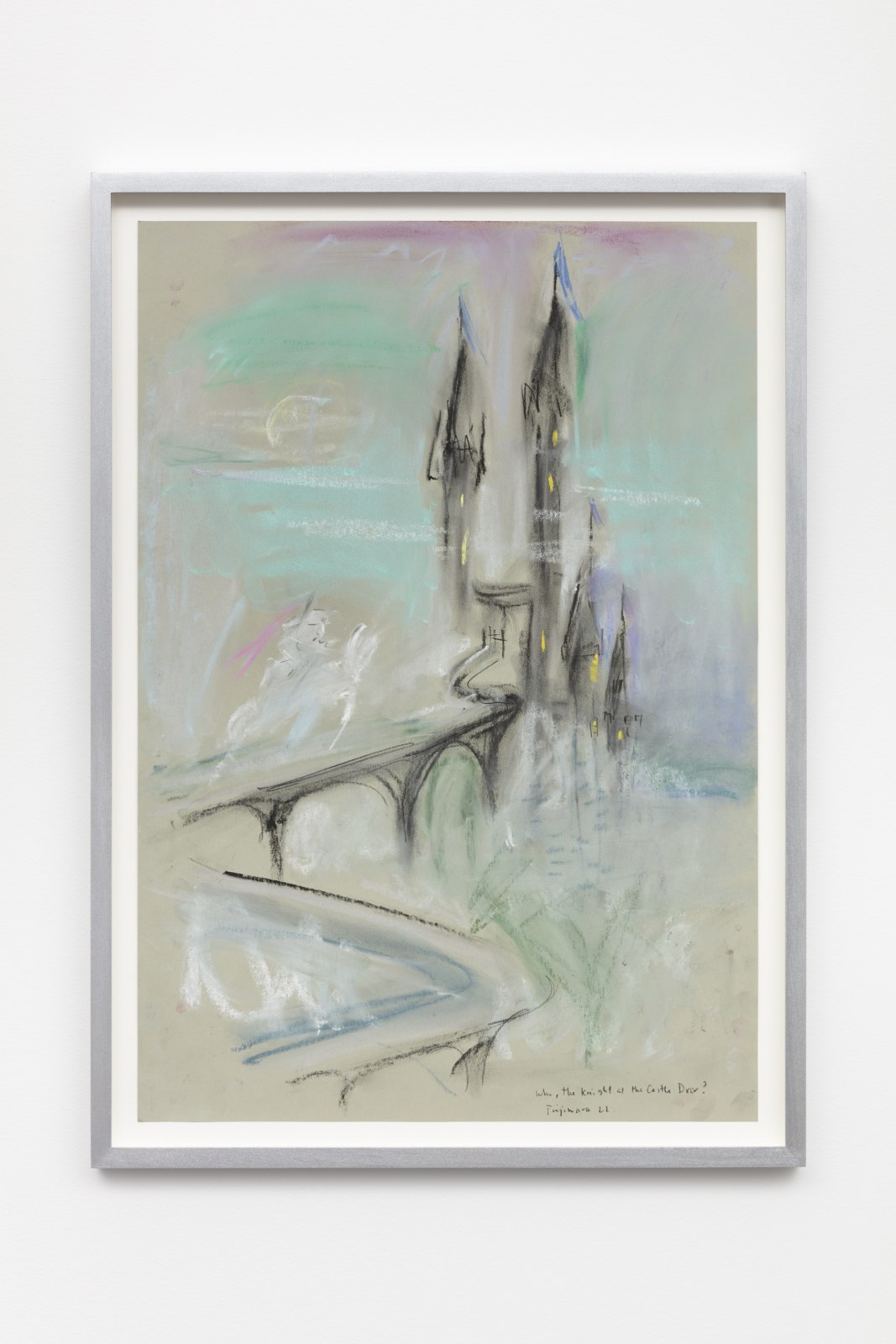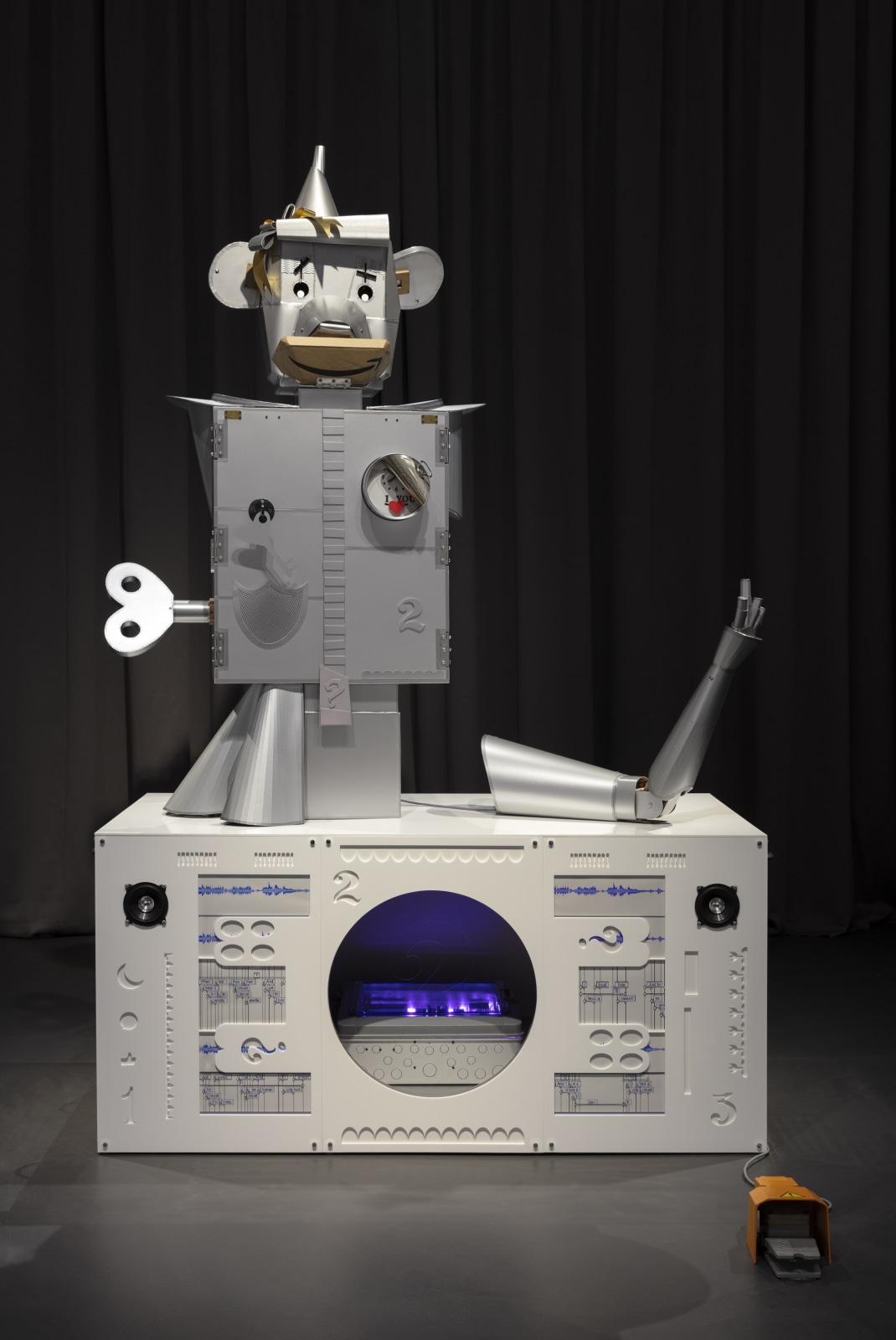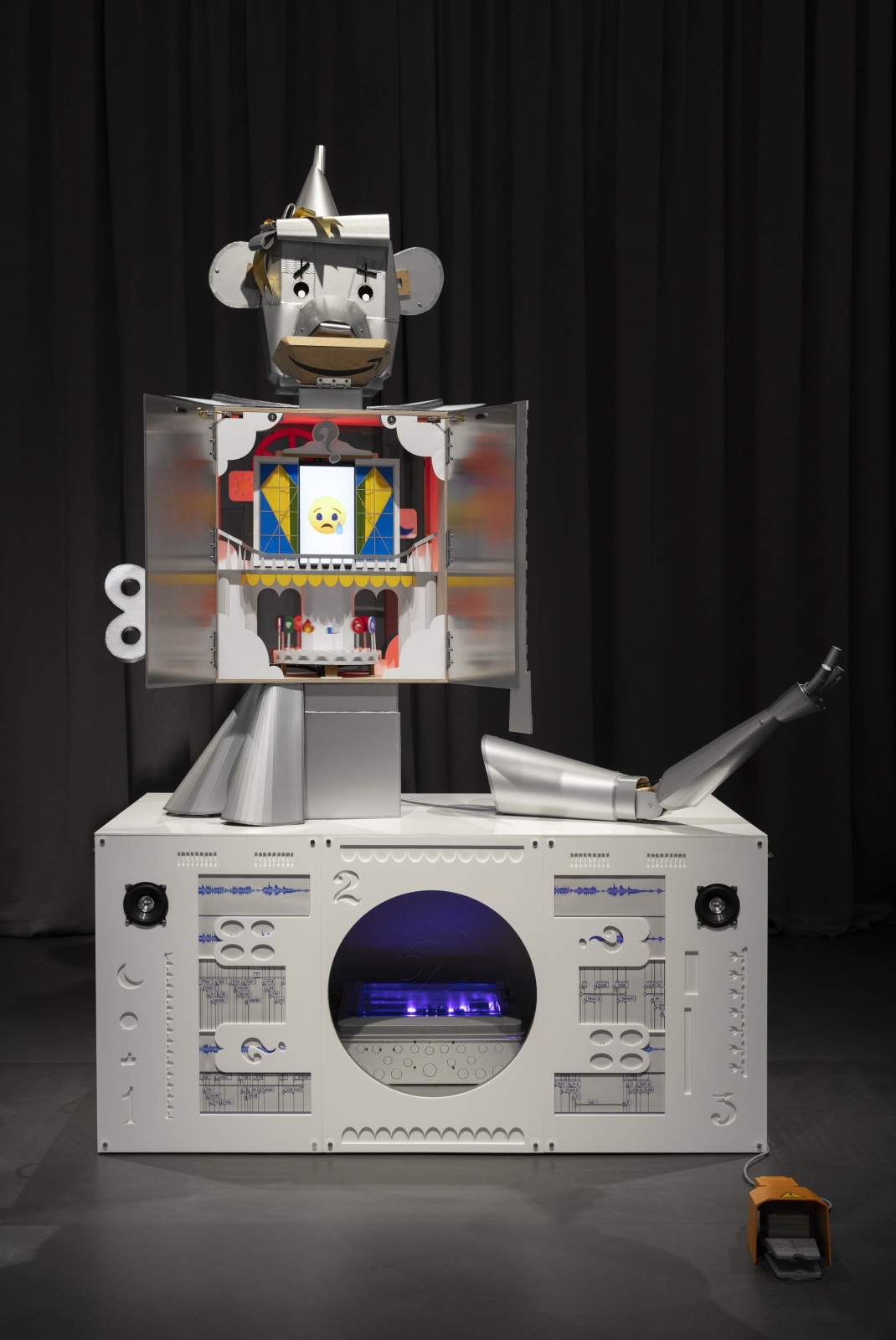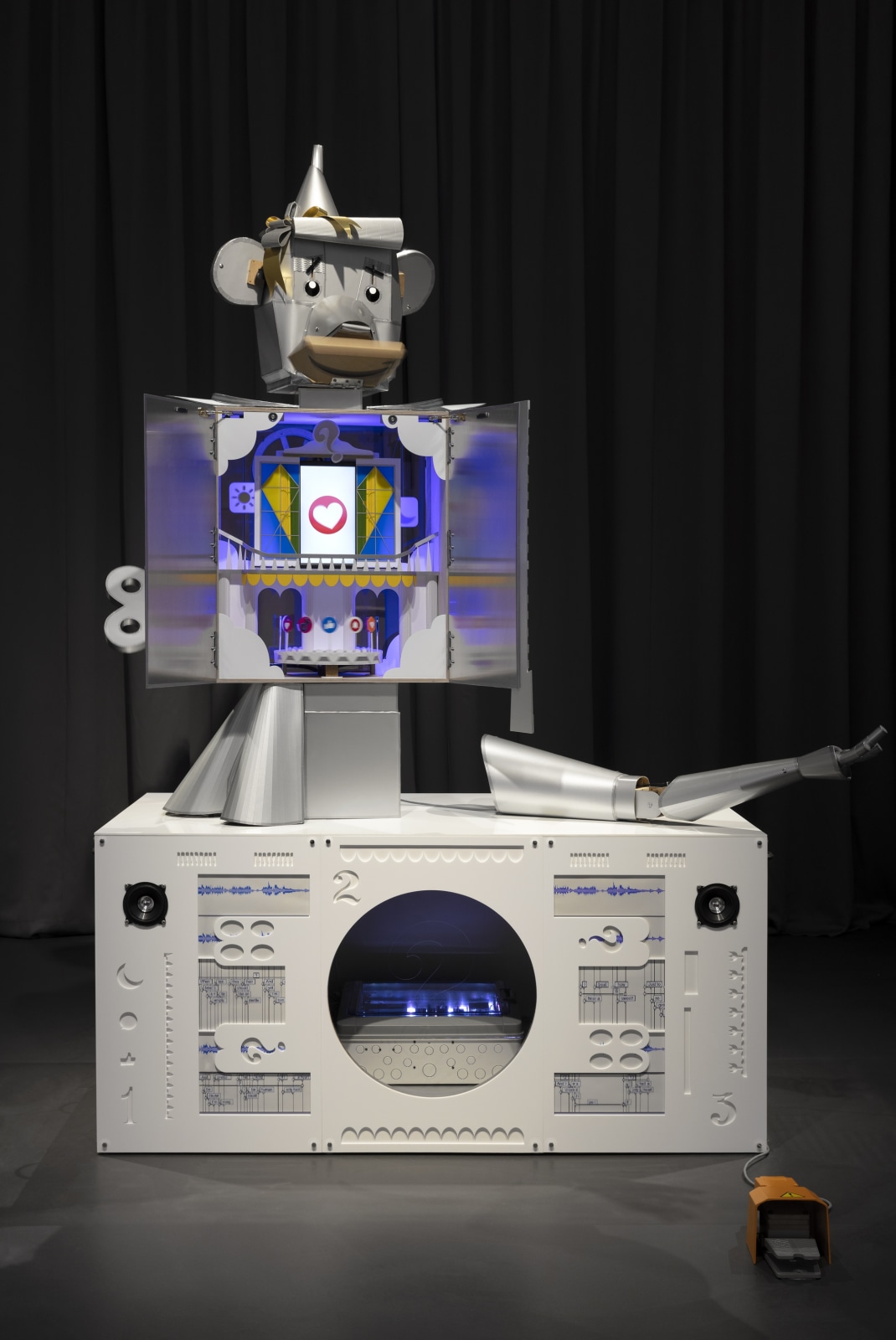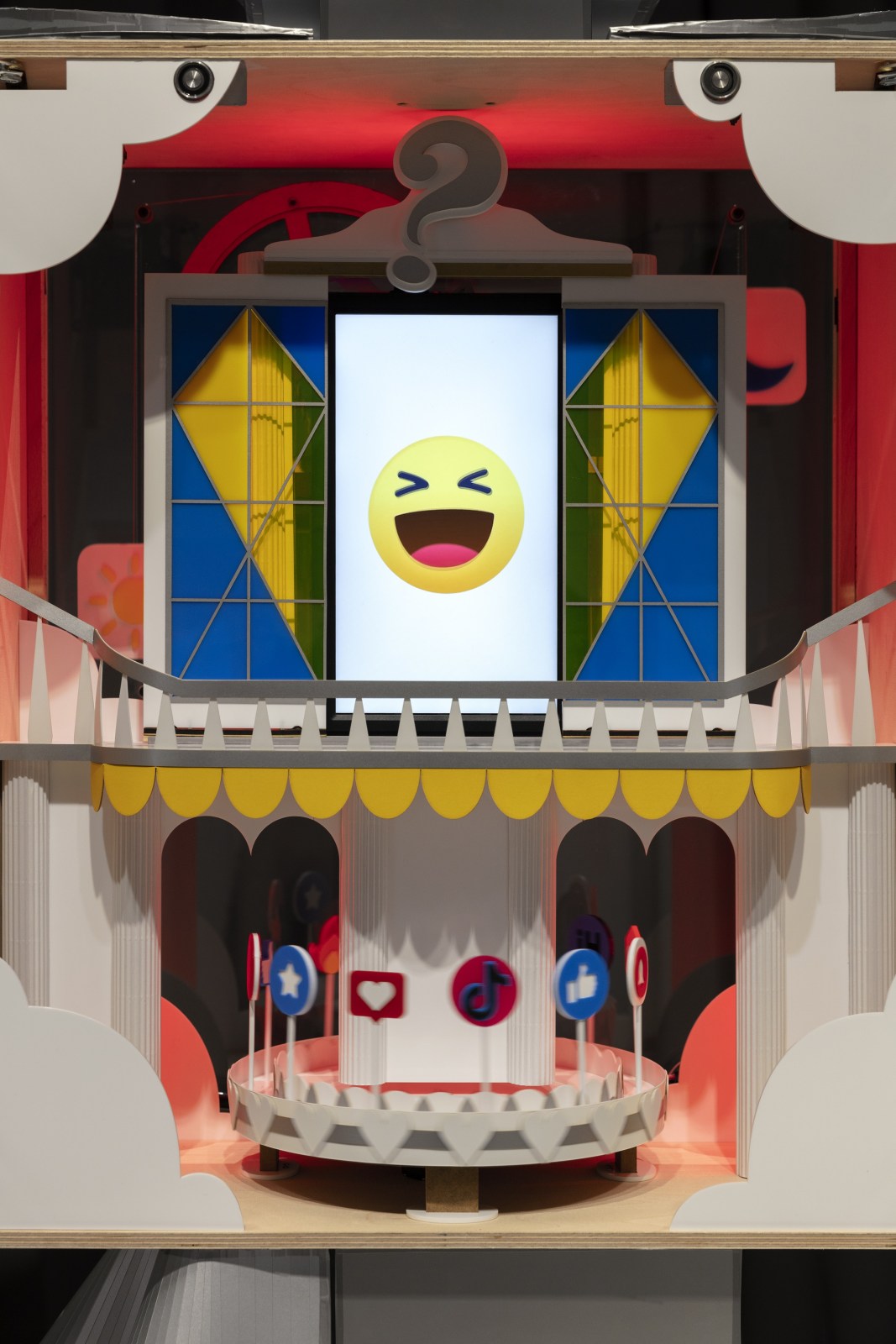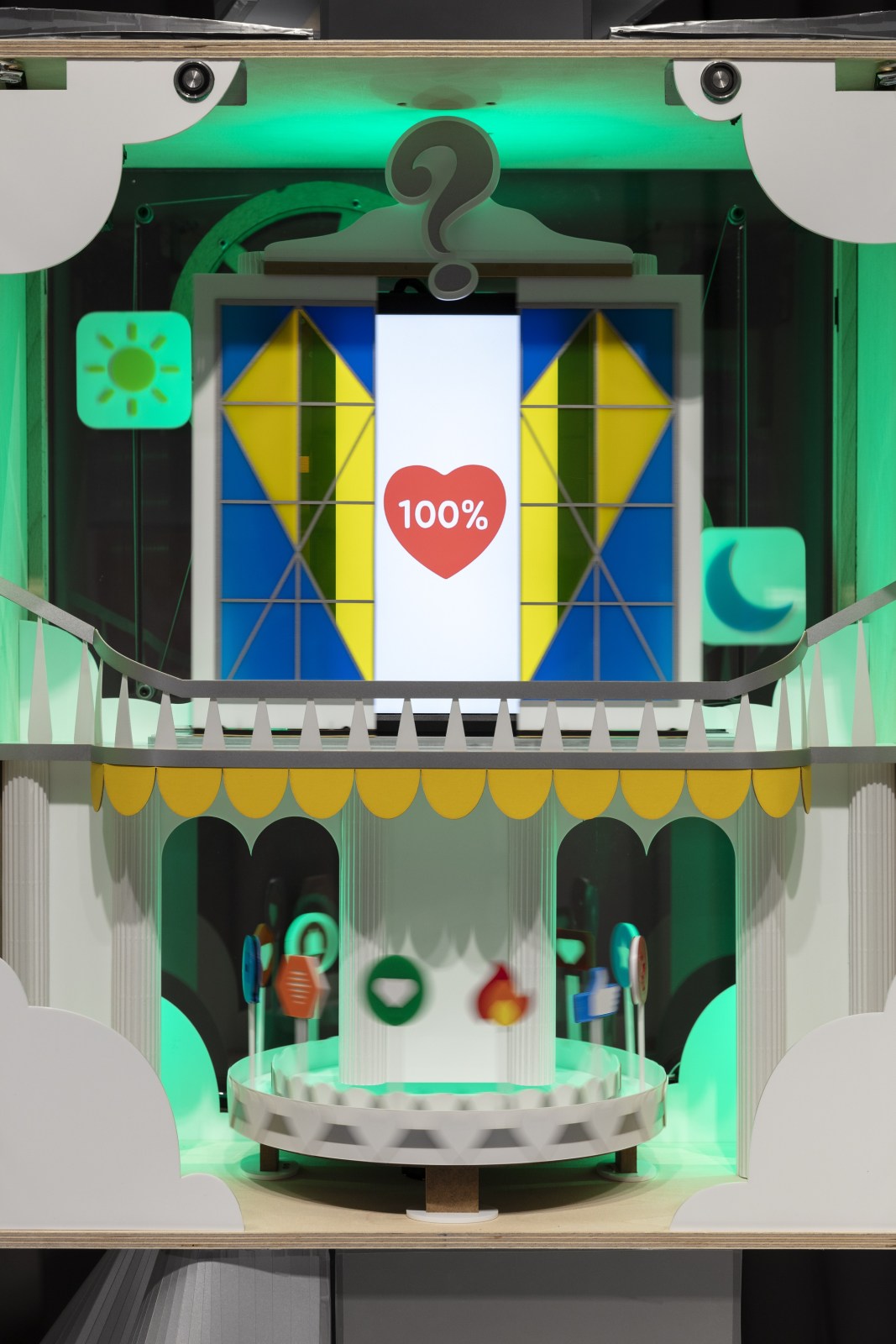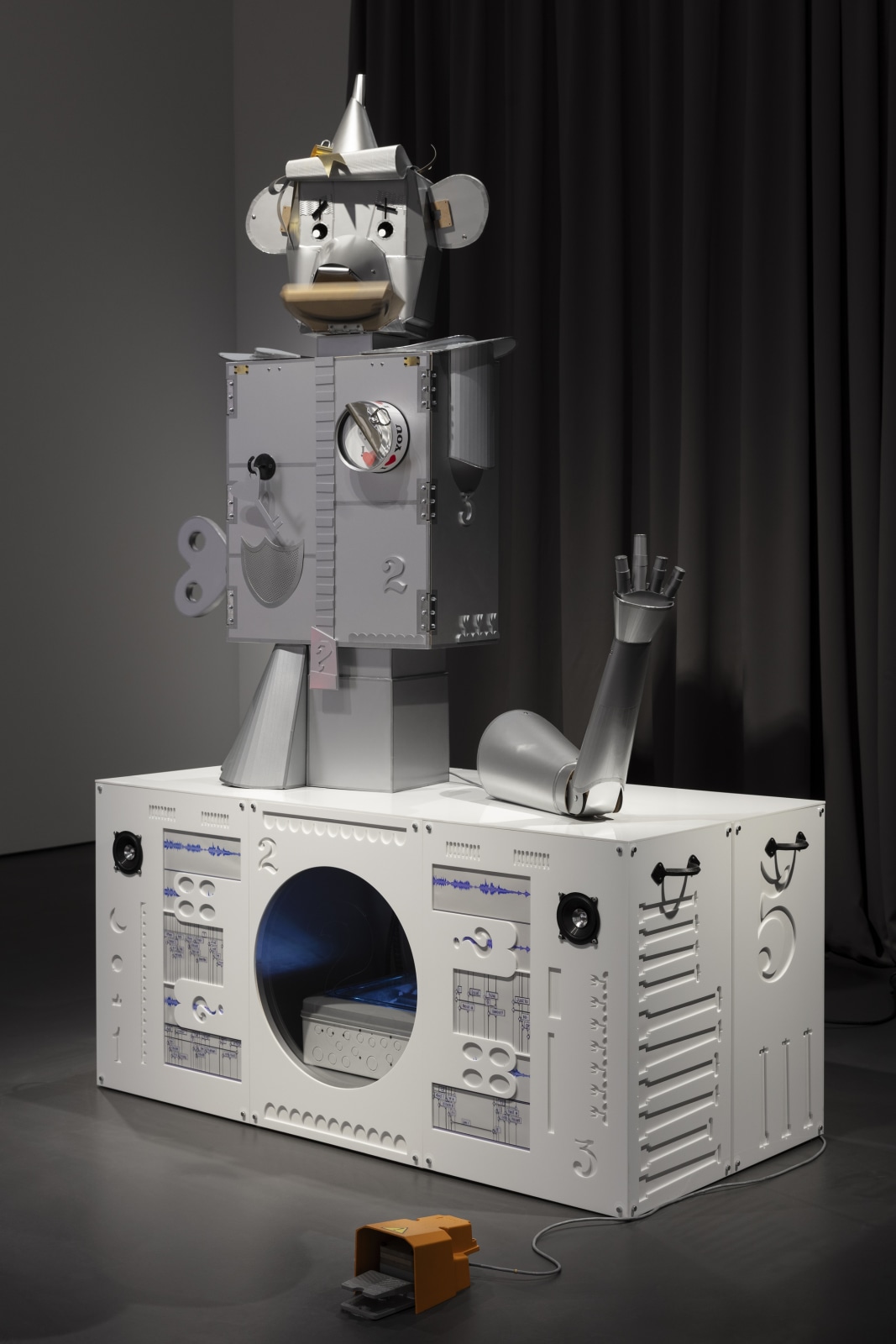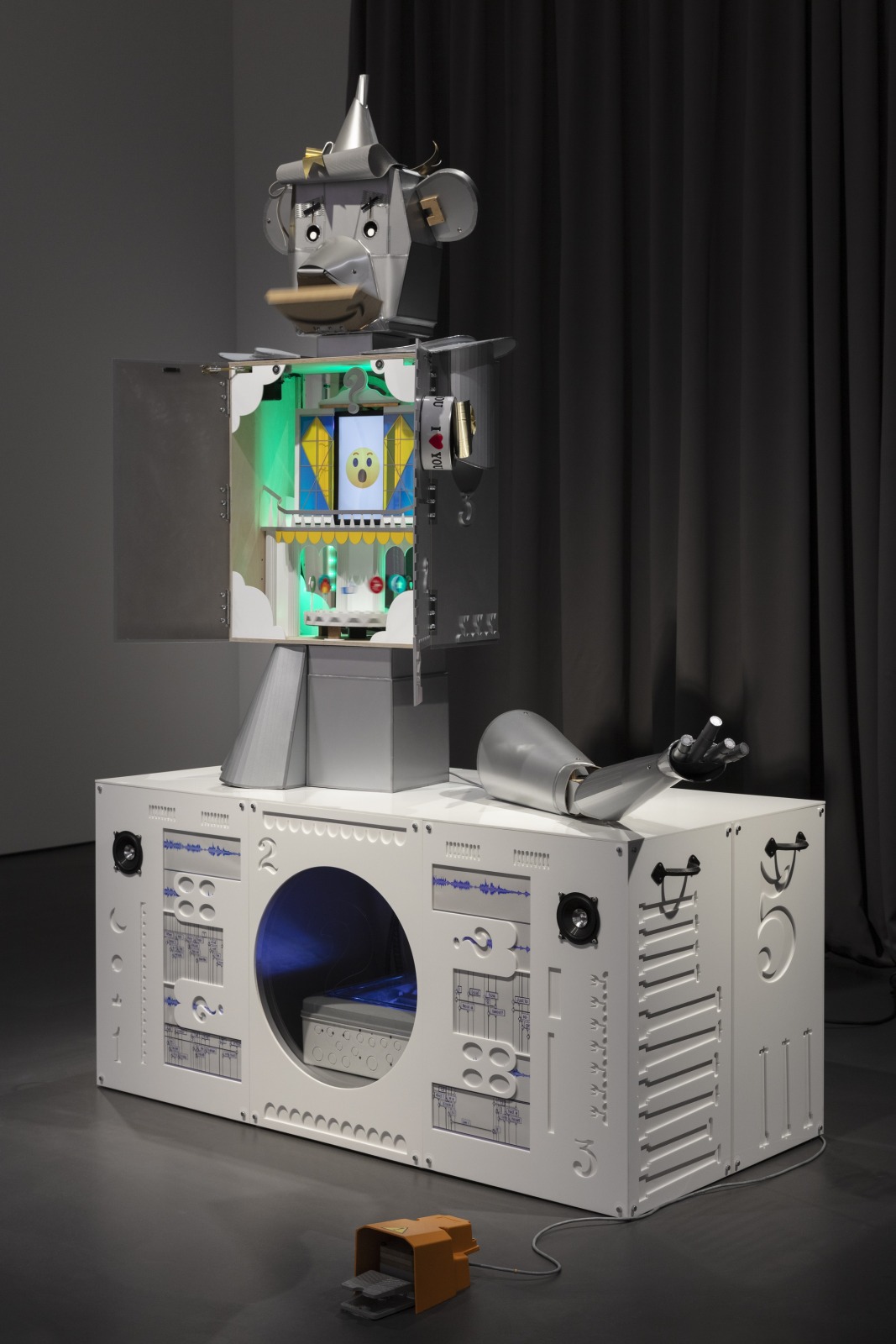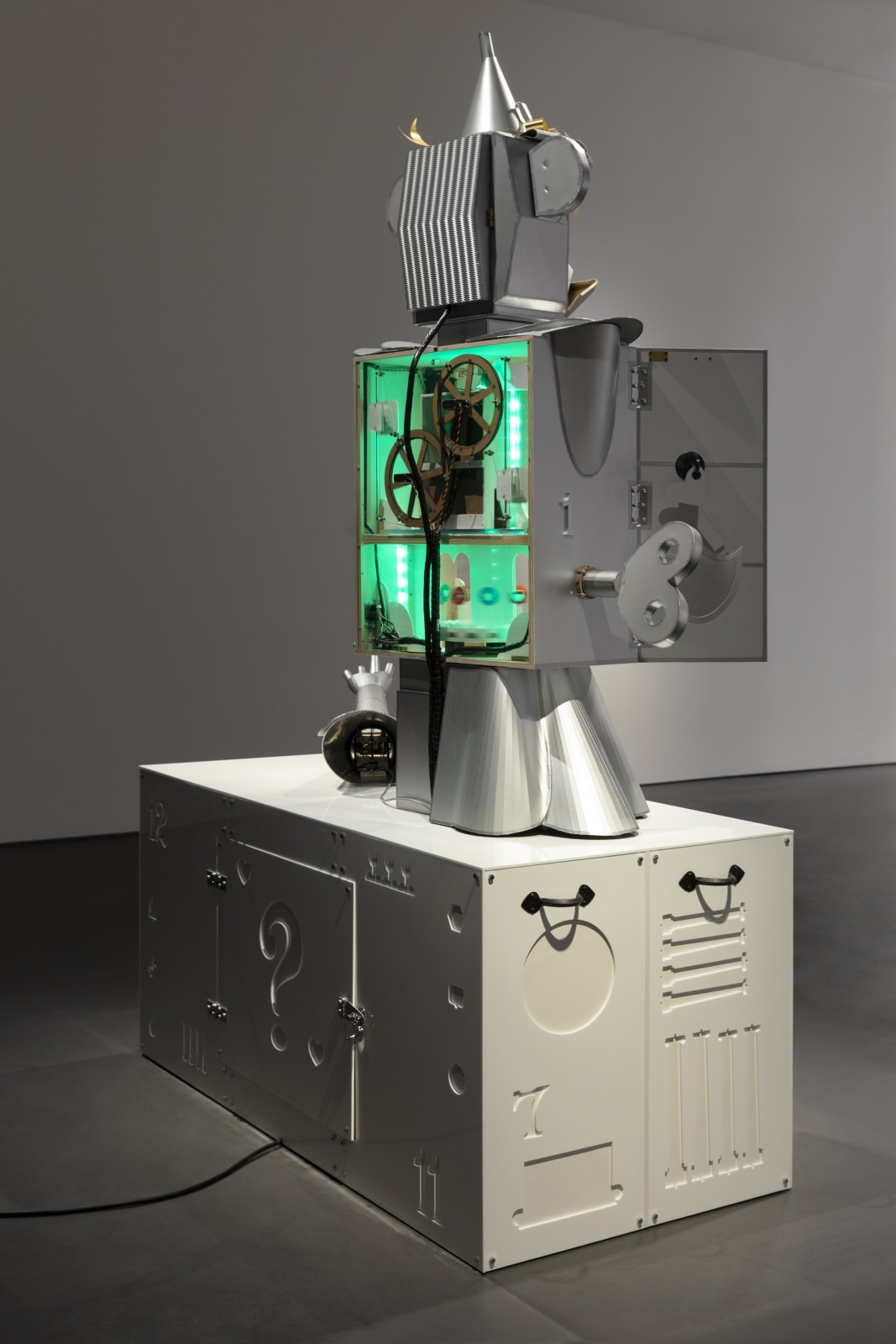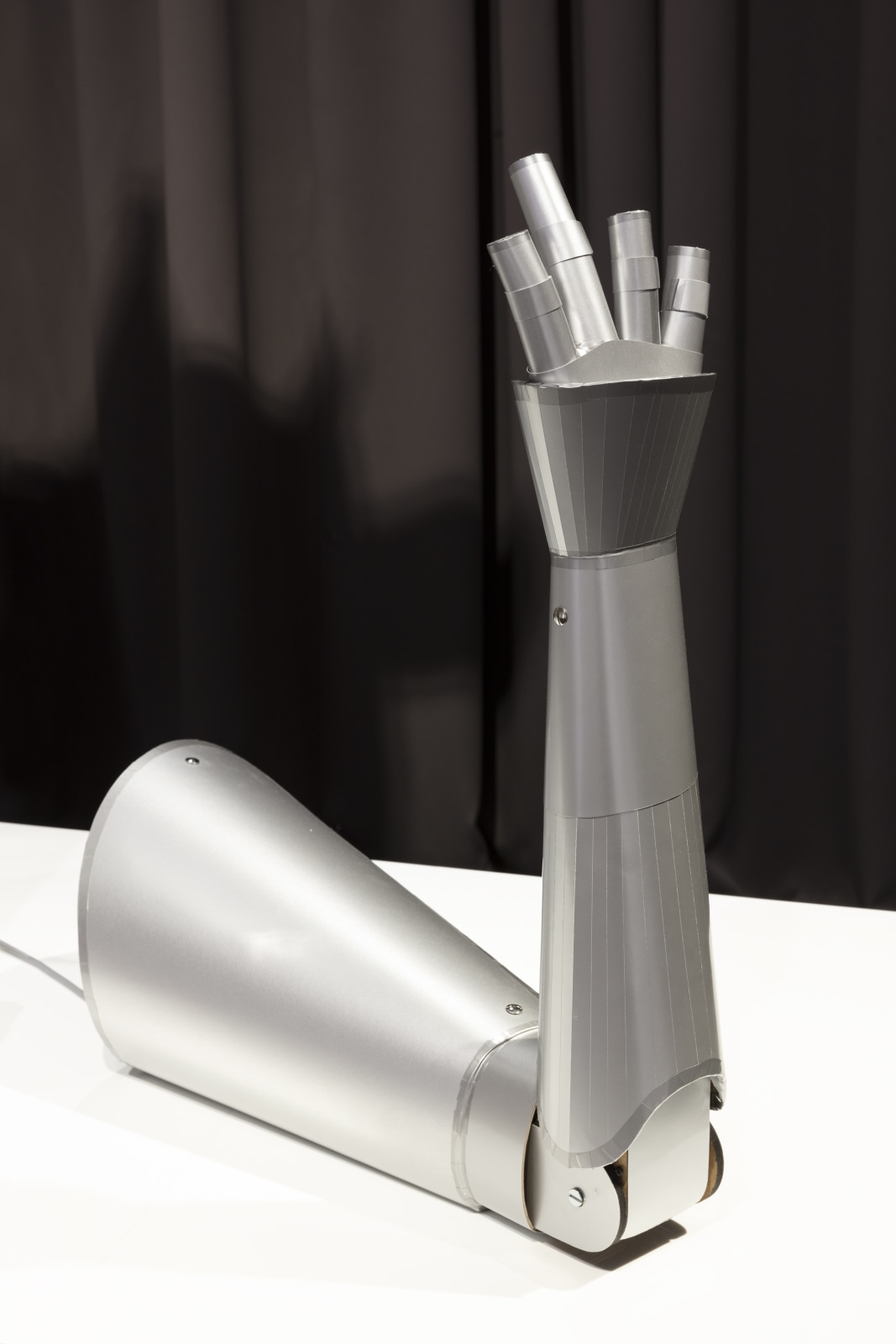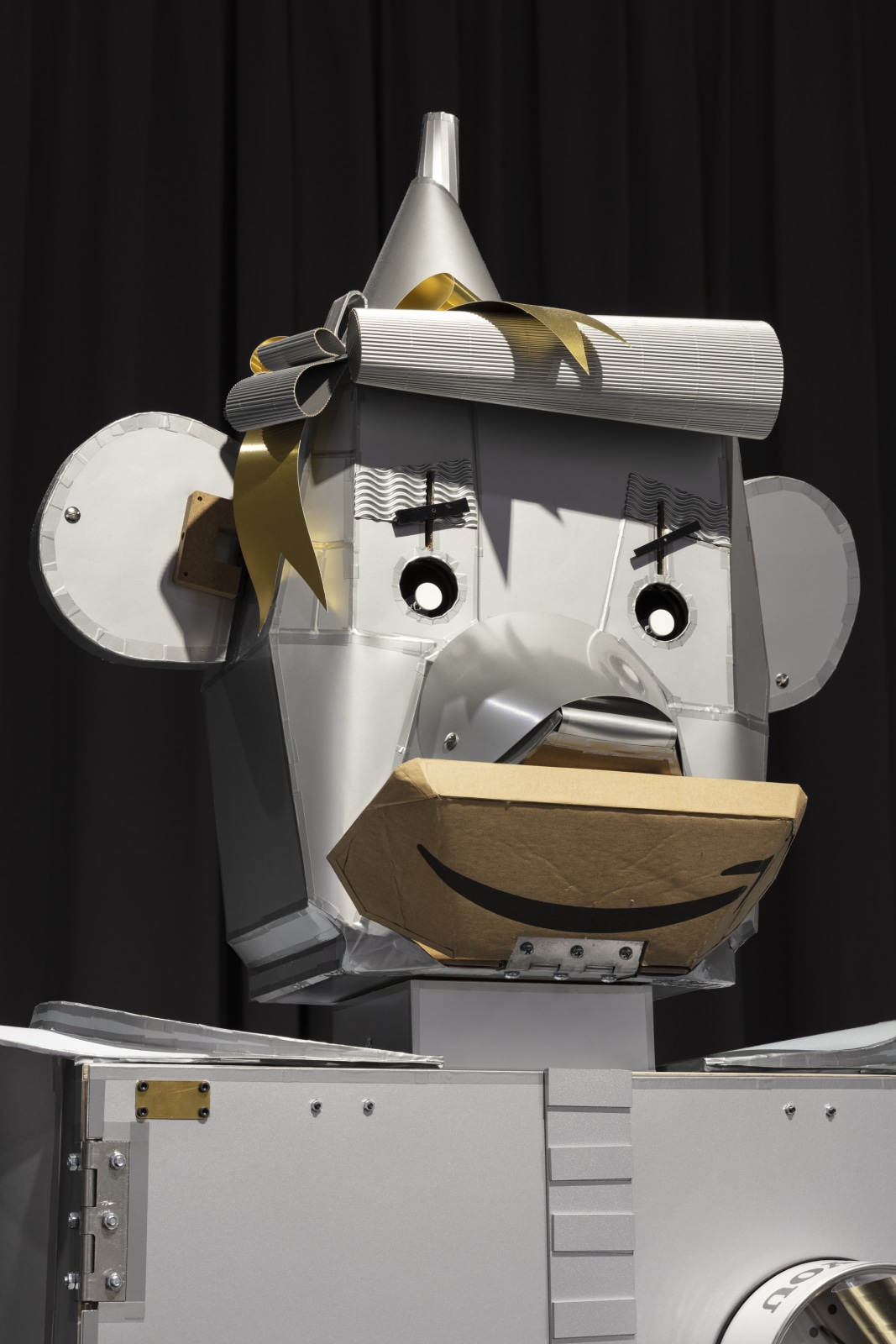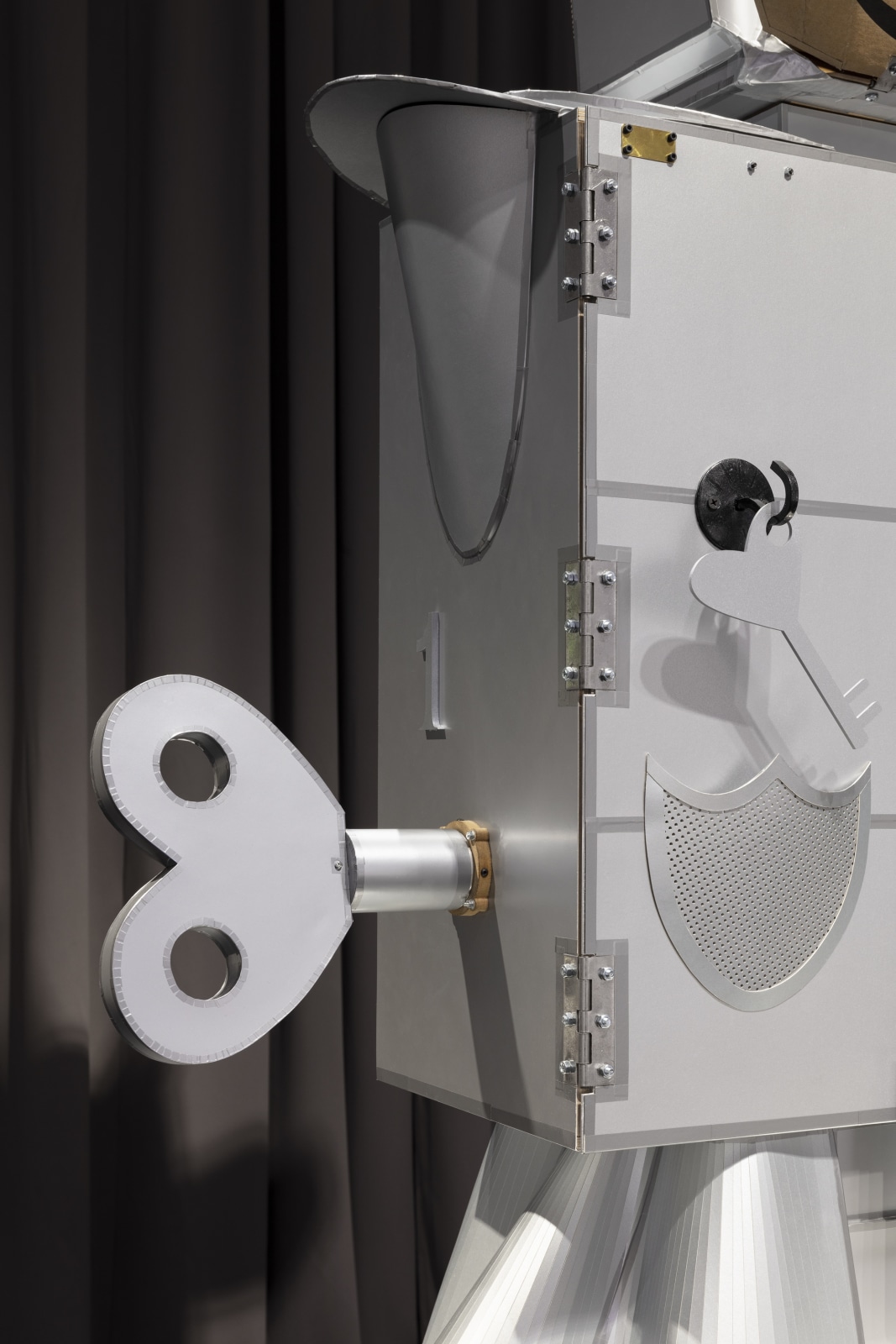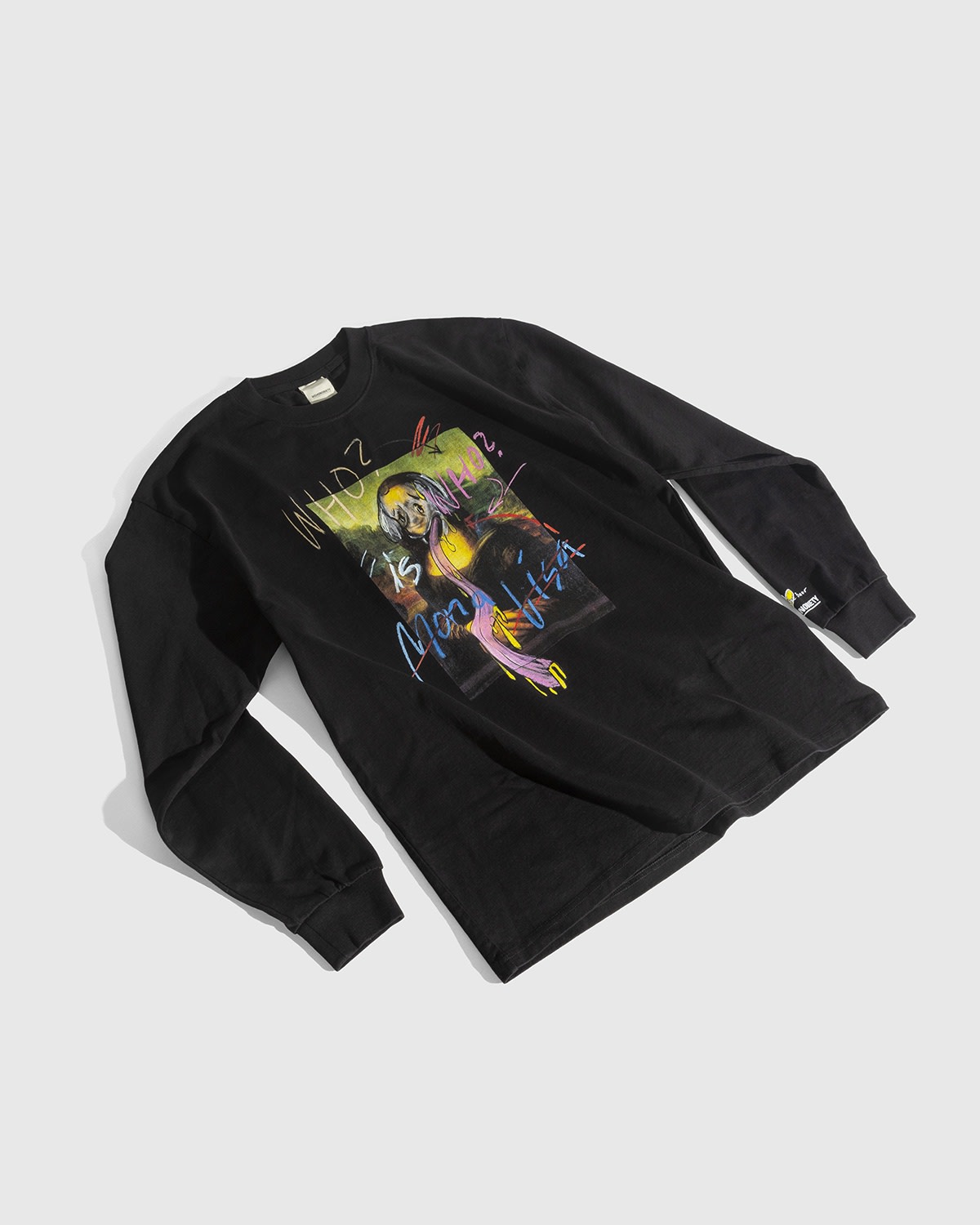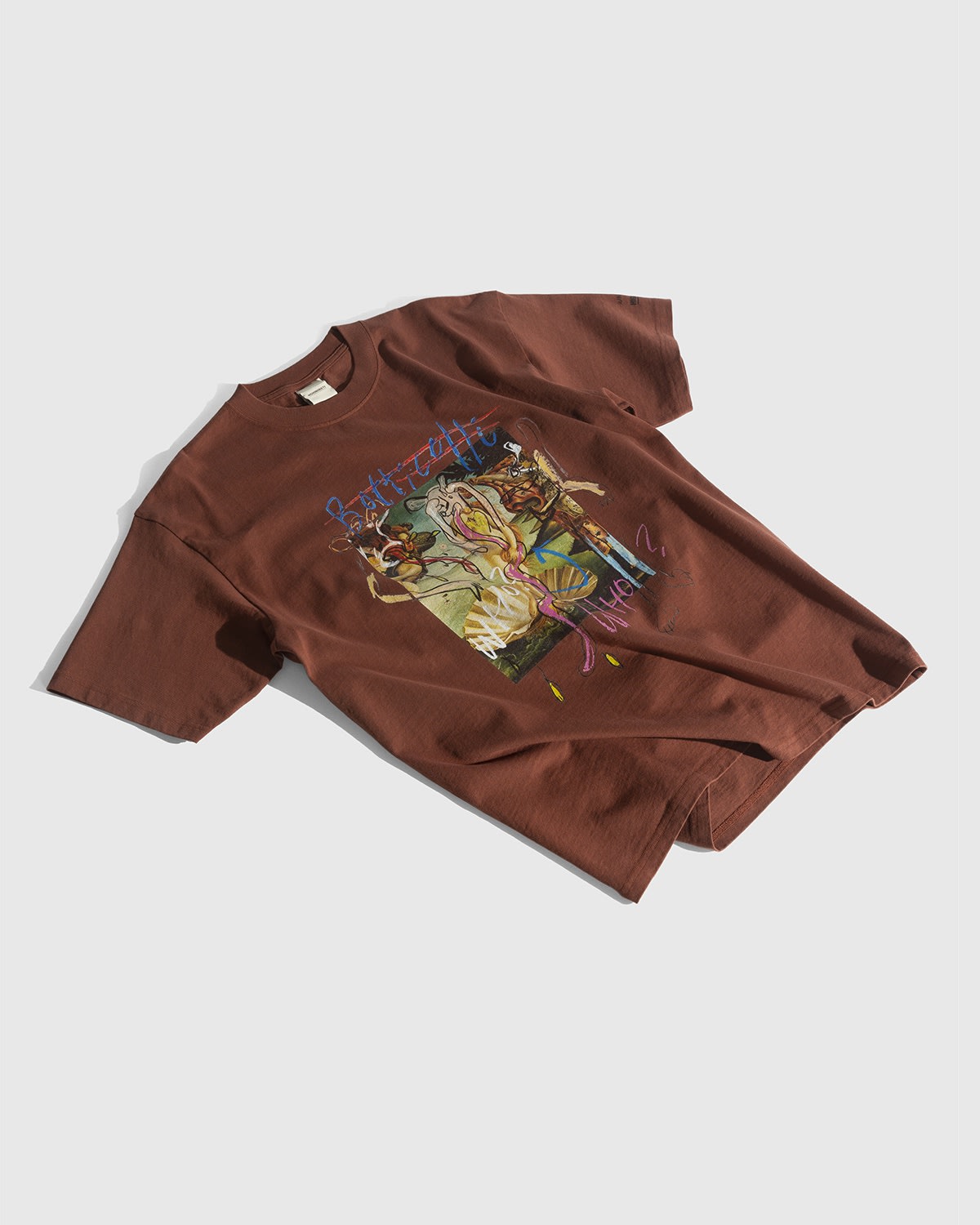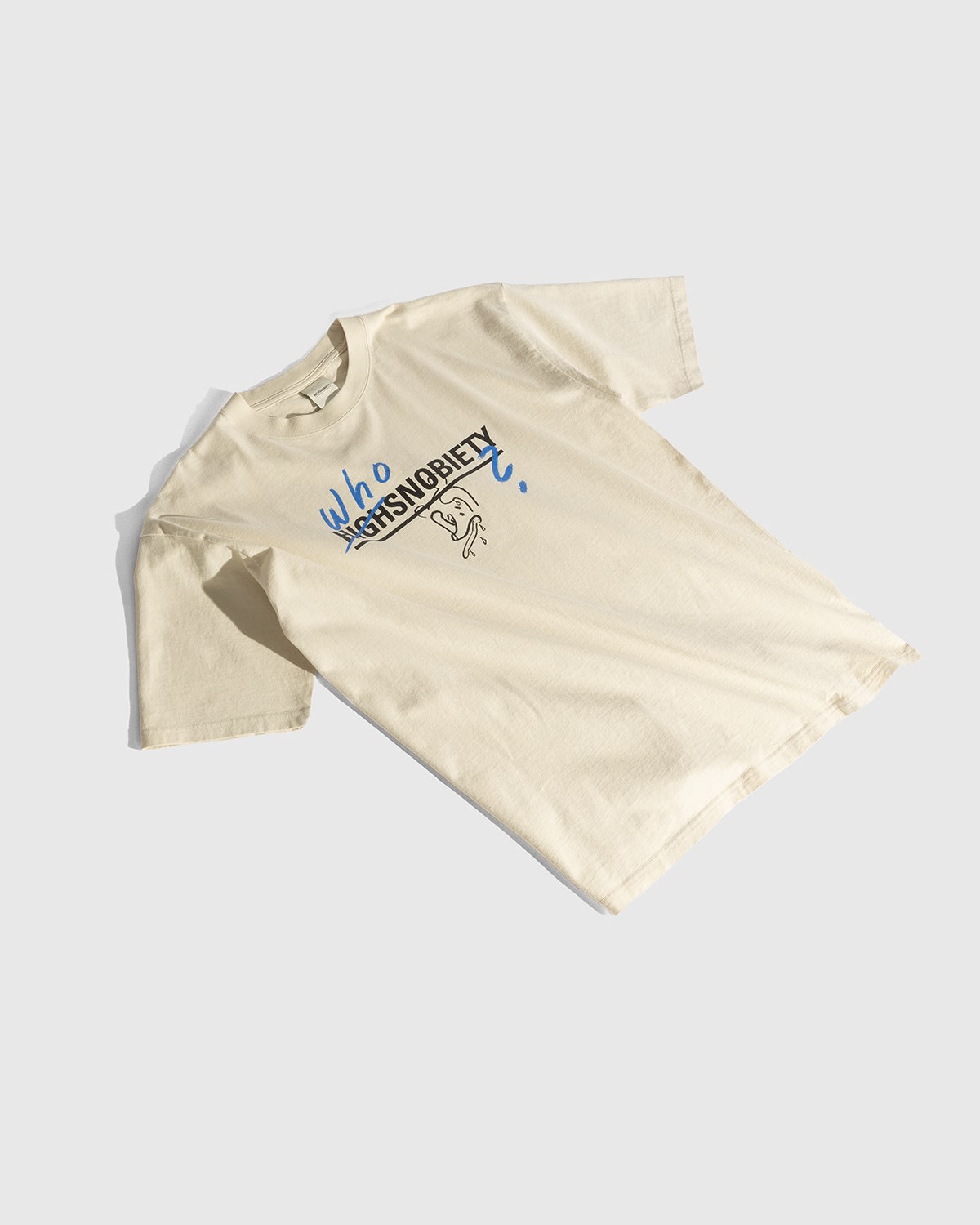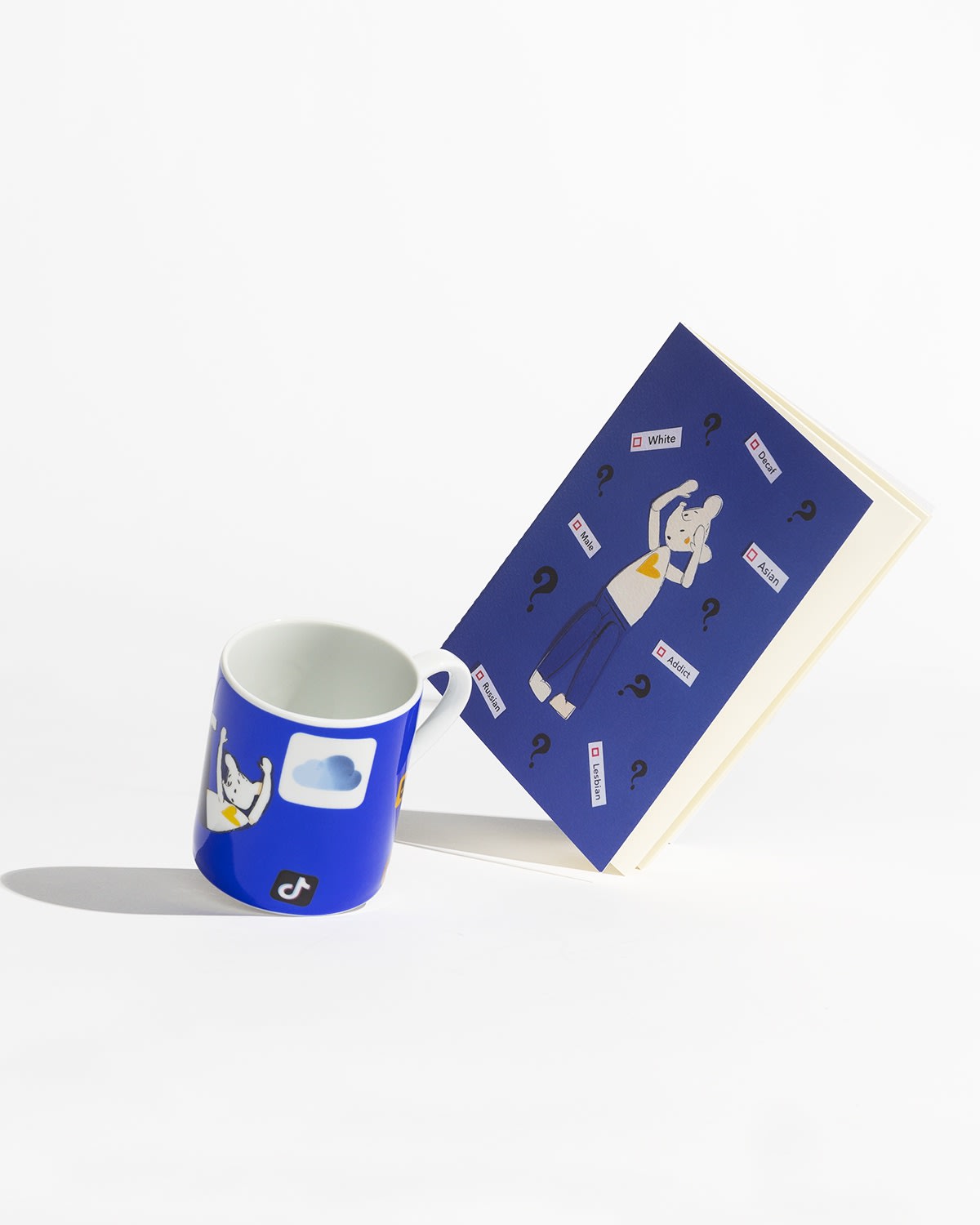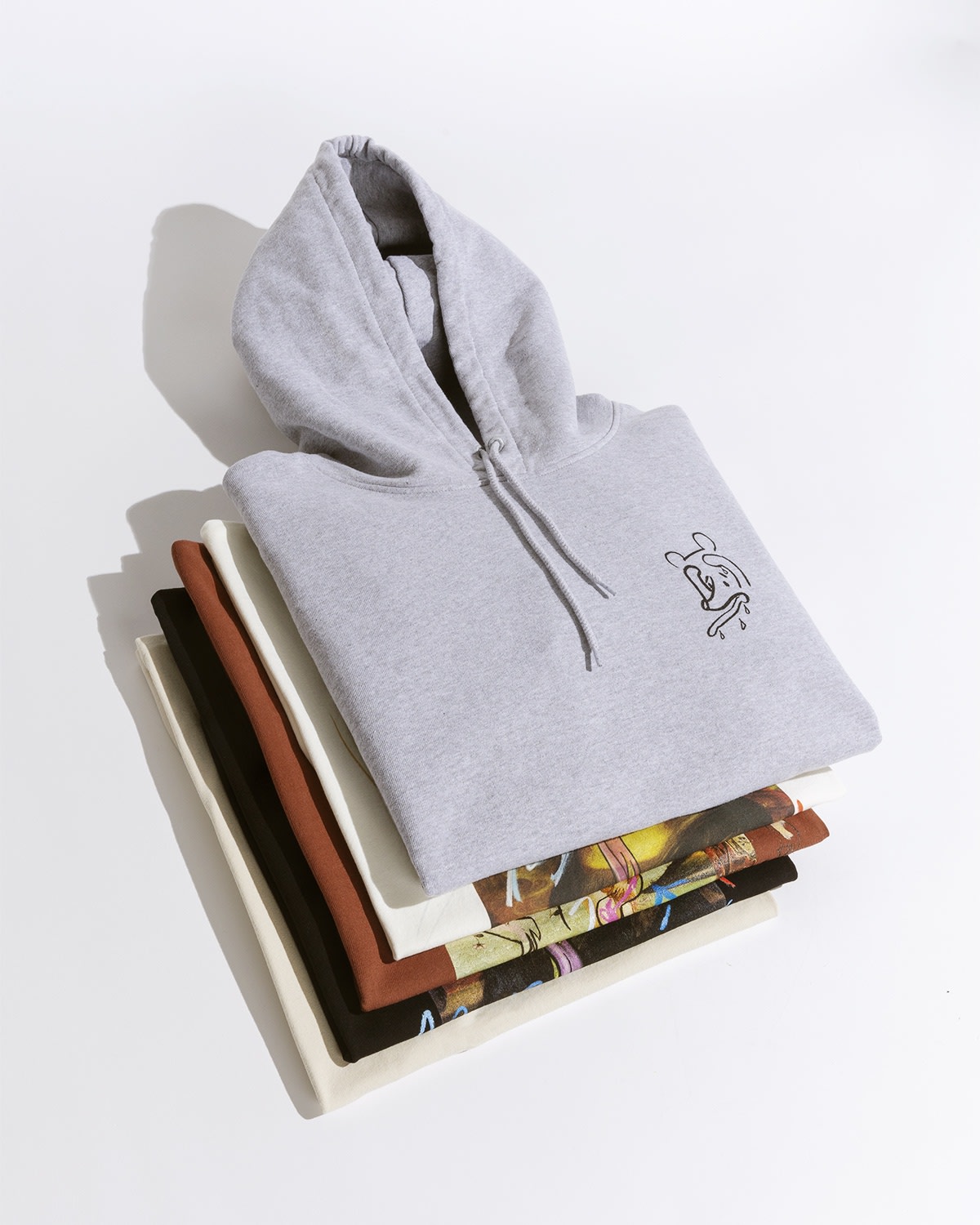Simon Fujiwara, Once Upon a Who?
Esther Schipper is pleased to present Once Upon a Who?, Simon Fujiwara’s second solo exhibition with the gallery. On view will be multiple new works from the artist’s Who the Bær project presented in a highly inventive range of media ranging from collage, drawing and sculpture to stop-motion animation and animatronic sculpture. In addition, Fujiwara is presenting a Whotique in the Esther Schipper Bookstore, a boutique devoted to merchandise from the world of Who, in collaboration with Highsnobiety.
A large-scale immersive exhibition, Once Upon a Who? highlights the multifaceted development of the original cartoon figure, which Fujiwara created in Spring 2020 and first presented at the Fondazione Prada in Milan in summer of that year. Staged within an exhibition design resembling a museum with different rooms devoted to different chapters of their development, visitors encounter Who the Bær: a bear that seemingly has no race, gender, sexuality or nationality.
In the first room of Fujiwara’s Once Upon a Who?, a stop-motion animation presented in a blue carpeted environment with colorful plush seating, introduces the central themes of the exhibition and the Who the Bær character. Among them are the origin story of the figure and the significance of the characteristics Who has been given; the processes of identity formation, especially regarding gender and race; the effects of mass media, social media, dating apps, and celebrity culture on those processes; as well as cultural appropriation, colonialism and the controversies around stolen artifacts and art.
Once Upon a Who? introduces the central themes of the artist's Who the Bær project. Screened as part of a custom-made environment, the stop-motion animation presents Who, the original cartoon figure created by Fujiwara. Created in a process of stop-motion–placing the cut-out elements from one frame to the next to create the illusion of movement–Once Upon a Who? recalls early film animation, yet also addresses topical issues relating to the contemporary digital media.
The simply executed but visually striking animation is accompanied by a soundtrack that includes a text, performed by the artist: intoning the poem-like verses, at times with a humorous undertone, at times even half-singing, the artist highlights the mock pathos of his tale.
In the subsequent rooms, these topics unfold in a series of specifically themed spaces. Who’s negotiation of identity is explored in two sections through collages and modified images and objects that combine traditional and contemporary representations of feminine and masculine stereotypes.
Constantly encountering and performing different identities, we watch Who the Bær as they try, fail, and try again to enact, perform or embody the various lifestyles and identity choices on offer, mostly online. Seen through the distorted lens of a cartoon character, Who the Bær offers a tender but at times disturbing, dada-esque response to a contemporary society possessed with spectacle and identity performance. Nostalgia, anxiety, an inability to commit and a longing for authenticity mark the journey of Who the Baer, a story that seemingly oscillates between the extremes of joy, hedonism and melancholy and loneliness.
The sculptural video installation Who’s Childhood? projects an animation depicting a revisionist history of Who's infancy and childhood. Housed in a cartoonish sculptural projector, the home-movie style animation parodies tropes of childhood nostalgia and authenticity. The association with home movies is reinforced by the animation's soundtrack featuring the low hum of a rattling film projector.
Who's Modernized (Small Beast) is from Simon Fujiwara's series recreating iconic art works by modern and contemporary artists through the perspective of his cartoon figure Who the Bær. The sculpture draws on Alexander Calder's metal sculptures. Iconic and enormously popular, Calder's works range from the miniature to the monumental. Fujiwara has modified the characteristic shapes found in Calder, as well as adding a pink element, representing Who's uncontrollable tongue, and, similar to the elder artist's early work, introducing abstracted figurative elements in which one can recognize Who with his raised hands in a gesture of exasperation.
In addition to the soundtrack, the program animates parts of the figure: a giant turning key on its left side, and a detached arm placed on the figures right on the white box that functions as a pedestal, begin to move. In the course of the song, the torso of the figure opens and a brief animation plays on a small screen housed inside the chest cavity. Below the screen, equipped itself with door-like panels that open, a small merry-go-round turns, with flags representing icons from social media apps.
The outside of the robot has a child-like DIY sensibility that evokes the anachronistic aesthetic of The Wizard of Oz’s Tin Man, even as the box housing the animatronics draws on contemporary technology. While a circular window in its front, gives a view of the inside of the pedestal with illuminated technical equipment, the outside of the white box is ornamented with drawings that recall the waves of a cardiogram and diagrams of cybernetic circuitry. Recessed numbers and question marks are distributed over the box.
In addition to the main exhibition, Simon Fujiwara will present the first Whotique at Esther Schipper Bookstore. Continuing the collaboration with Highsnobiety initiated for Art Basel Miami Beach, the Whotique – a boutique devoted to merchandise from the world of Who – will present a series of Who the Bær related apparel, houseware, and posters that offer gallery visitors the chance to own a piece of the “Whoniverse.”

